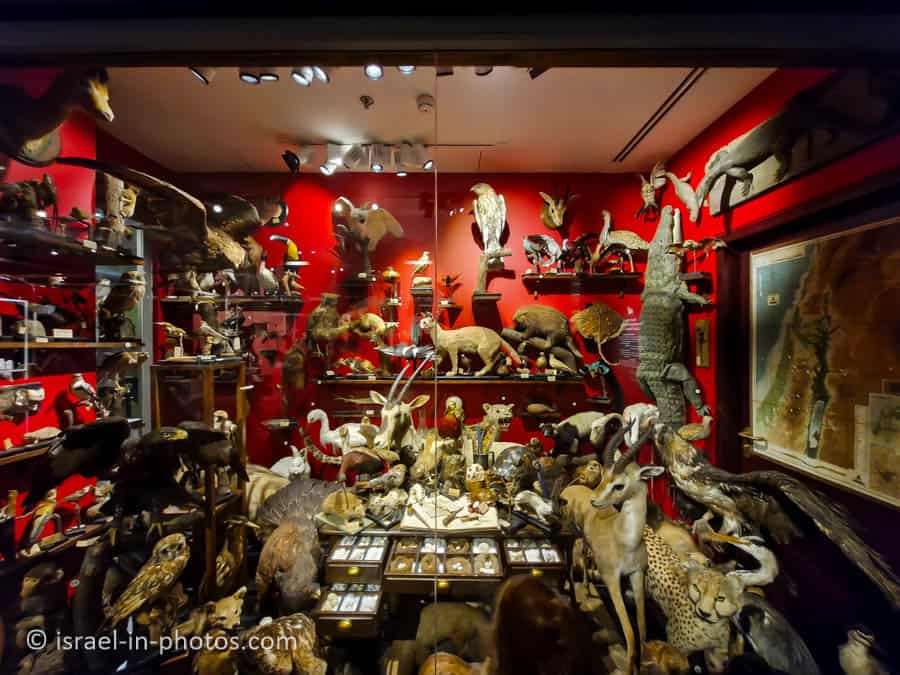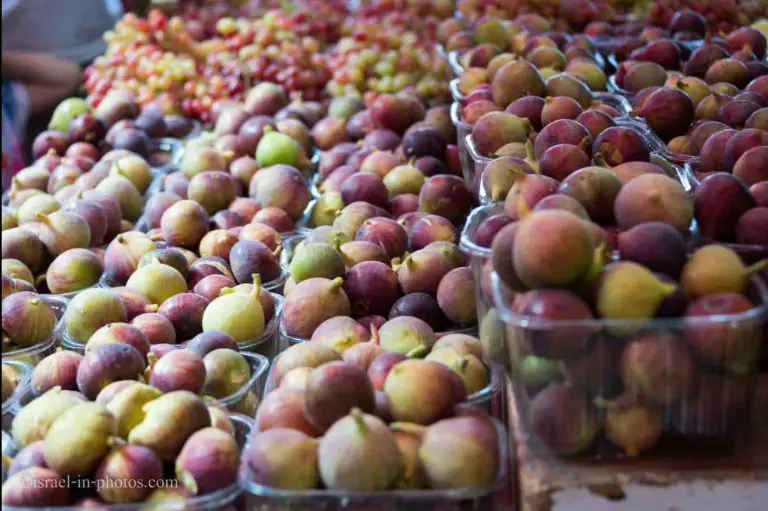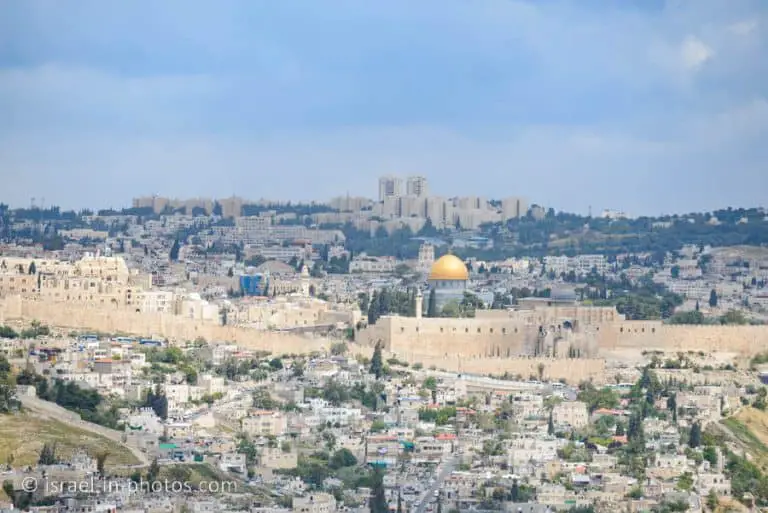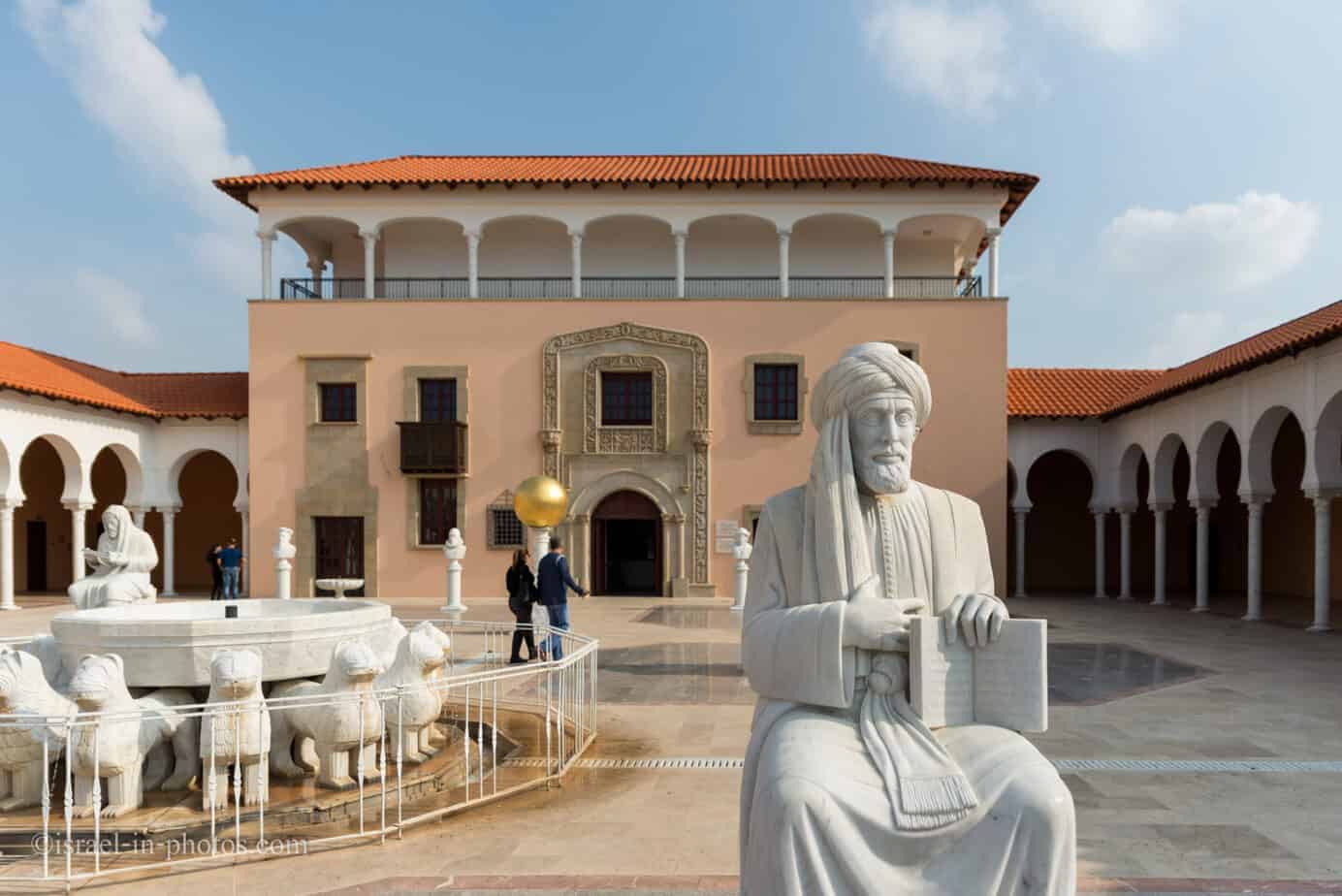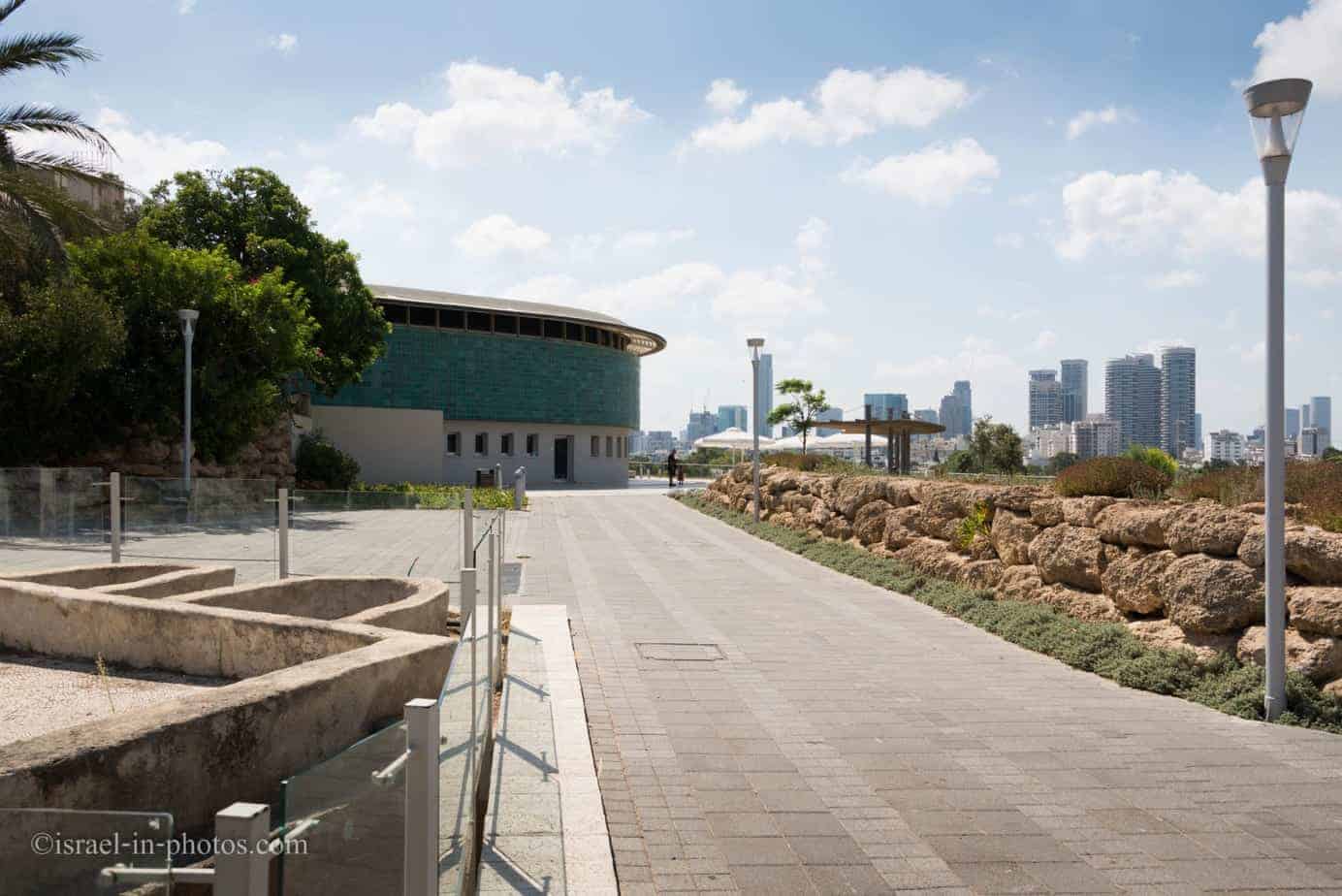The Steinhardt Museum of Natural History – Visitors Guide
The Steinhardt Museum of Natural History in Tel Aviv has many interactive exhibitions, making it perfect for families.
Please note that while this museum is fantastic and we enjoyed our visit, there are a few live animals on display. Most of the exhibits feature stuffed animals. If you are not a fan of stuffed animals, this museum may not be the best fit for you.
Table of Contents
- 1 Map
- 2 Opening Hours
- 3 Entrance Fee
- 4 Coupons
- 5 Tours
- 6 Israel’s Landscapes
- 7 Form and Function
- 8 The Human Impact
- 9 The Web of Life
- 10 Treasures of Biodiversity
- 11 Song of the Corals
- 12 What Makes Us Human?
- 13 Bugs and Beyond
- 14 How much time does a typical visit to the Steinhardt Museum of Natural History take?
- 15 Summary
Map
The Steinhardt Museum of Natural History is located near the ANU Museum of the Jewish People at Klausner 12, Tel Aviv. The entrance is on the opposite side of gate #2.
Directions for drivers: Link to Waze and Link to Google Maps
Directions for public transport: Link to Moovit
Interactive map of the area:
The exhibitions in the museum are spread over several floors, and here are the details:
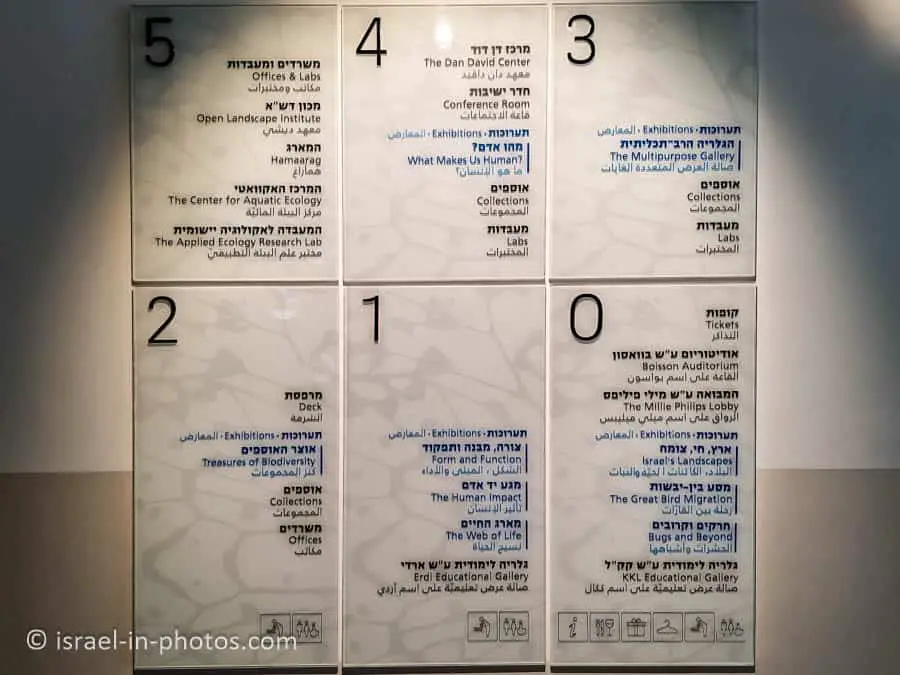
Directions
You can reach the museum in different ways. If you choose public transport, you can commute by bus or train (Tel Aviv University train station is about a 10-minute walk away).
If you decide to drive, you can find parking by the Steinhardt Museum of Natural History. There is a paid parking lot by the Steinhardt Museum of Natural History, and if you get lucky, you will find parking along Klausner Street.
We visited on a Saturday morning, and since we arrived early, there were parking spots along the street.
Opening Hours
Sunday – Thursday, and Saturday: 10:00 – 19:00
Friday 10:00 – 15:00
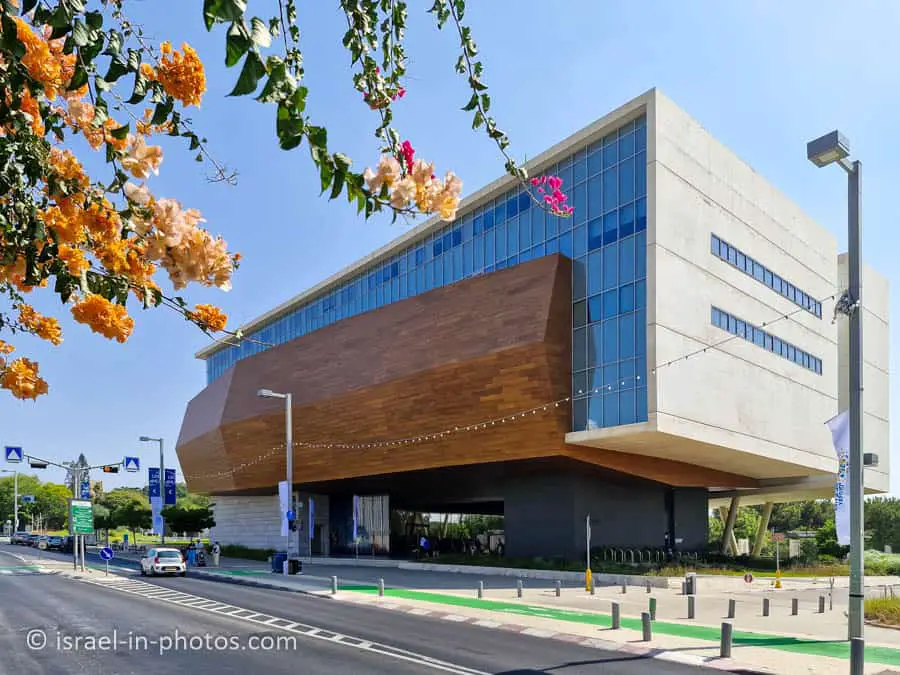
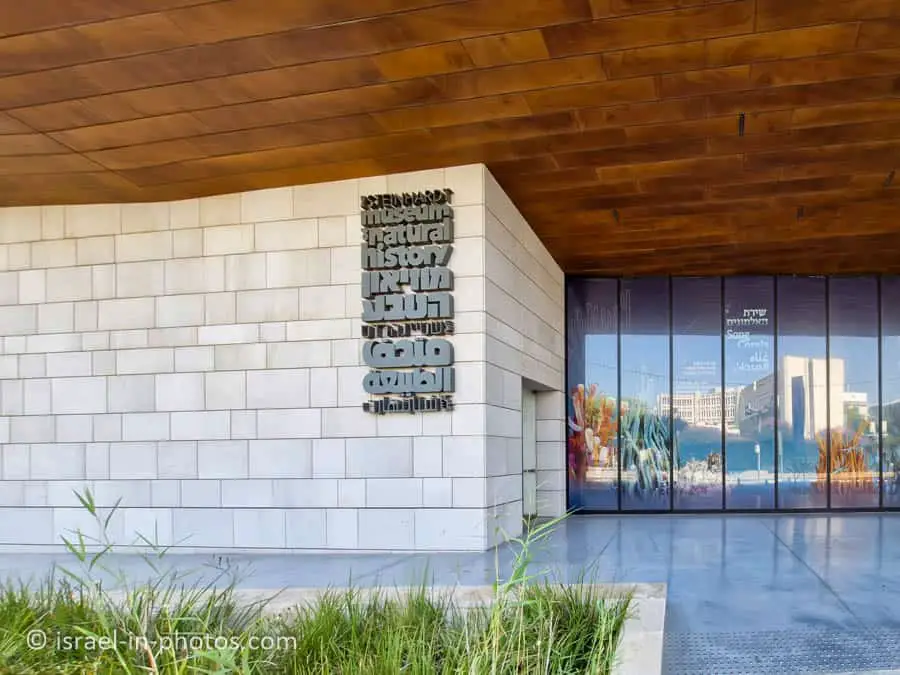
Entrance Fee
Regular Entrance: 52 NIS
Child under 5: free
Seniors, Students, and Tel Aviv residents: 42 NIS
Family ticket (4 people): 168 NIS
Notes:
- This popular museum recommends reserving places in advance for entrance. Without a reservation, admission is not guaranteed.
- The entrance fee and opening hours were updated in August 2025. In any case, recheck the official site before your visit. You can also purchase tickets through it.
Coupons
Currently, I have not found any coupons or discounts available for this museum.
Tours
This museum offers workshops and tours. During our recent visit, we wanted to attend a workshop, but there were no tickets available. Therefore, if you are interested in a specific activity, purchase tickets in advance. You can find additional details here.
Israel’s Landscapes
When we entered the museum, we saw a long corridor going up. And along that corridor, we saw an exhibition called “Israel’s Landscapes”.
Here is a quote from the official site:
Israel’s location at the unique intersection of three continents – Europe, Asia, and Africa – combined with the diverse climatic and soil conditions, forms the infrastructure for the existence of different habitats in a relatively small area.
A journey from west to east passes from the temperate coast and lowland regions to the hot desert regions, and from south to north passes from the dry desert region to the snowy Mt. Hermon. The multitude of habitats and the unique geographic location have led to a rich and impressive diversity of plants and animals in Israel.
This exhibition includes six large terrariums that display the range of habitats in Israel and the animals living in them. Among the 122 animals on display in this exhibition, you may find different species of animals common in the wild in Israel, including: Palestine viper, Palestine saw-scaled viper, greater Egyptian gerbil, European snow vole, desert hedgehog, Blanford’s fox, northern long-eared owl, heron, otter, and Levant water frog.
The exhibition included big terrariums with animals living in them. Beside each terrarium, there was a tablet with information about the animals. And here are several photos from that exhibition:
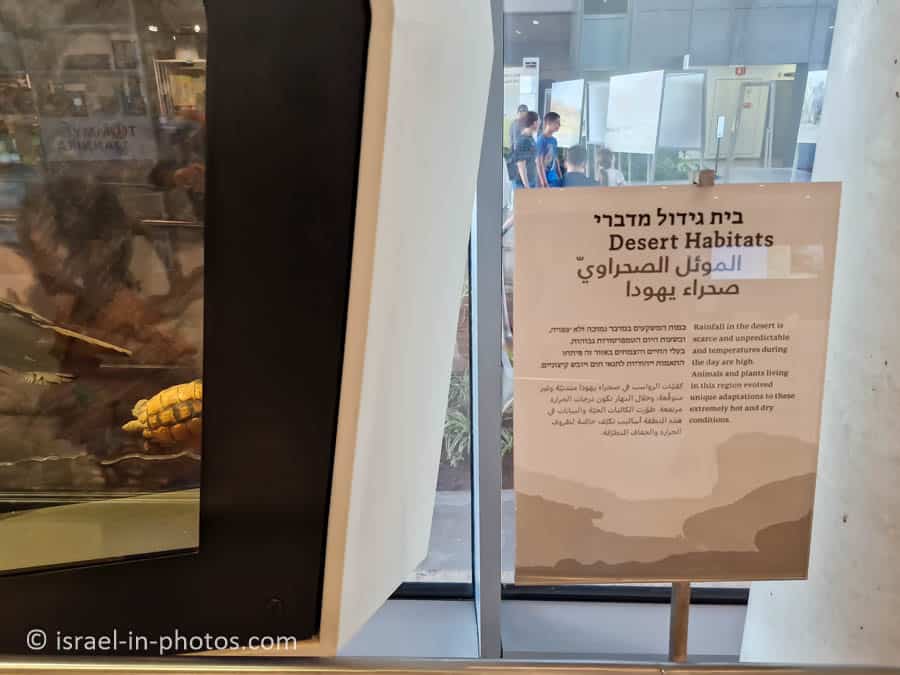
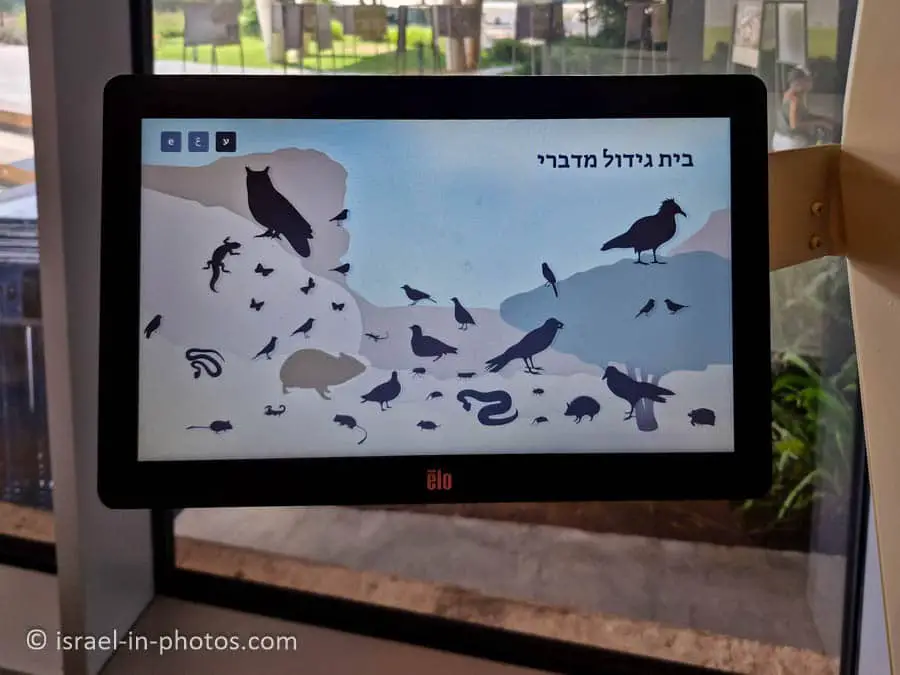
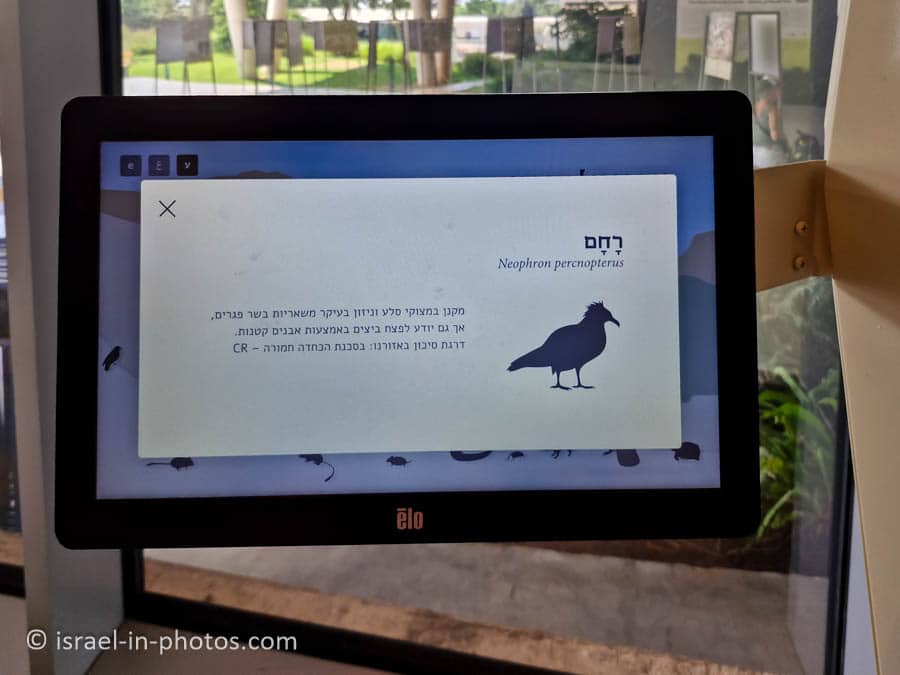
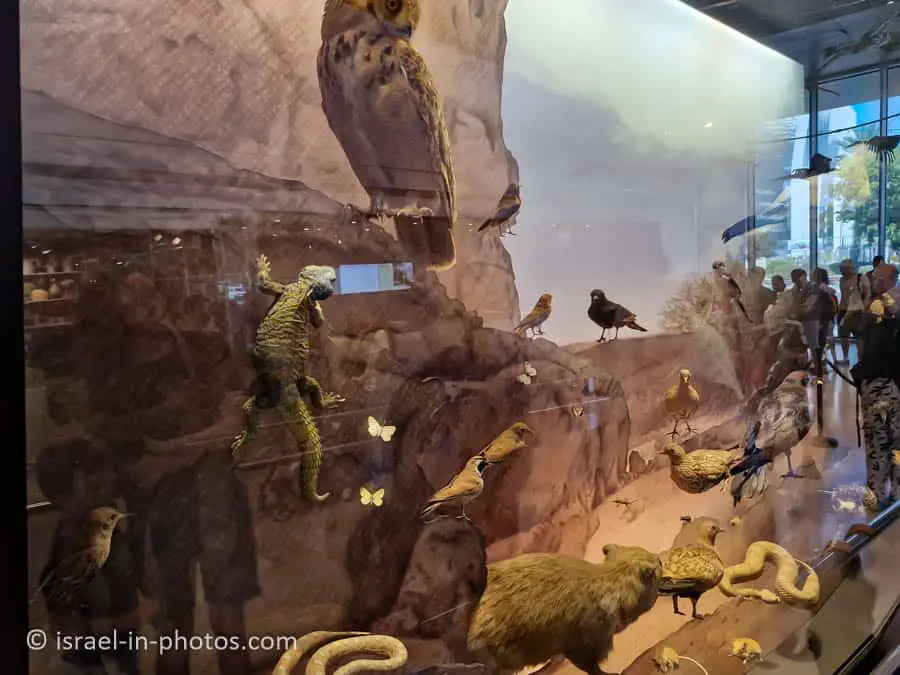
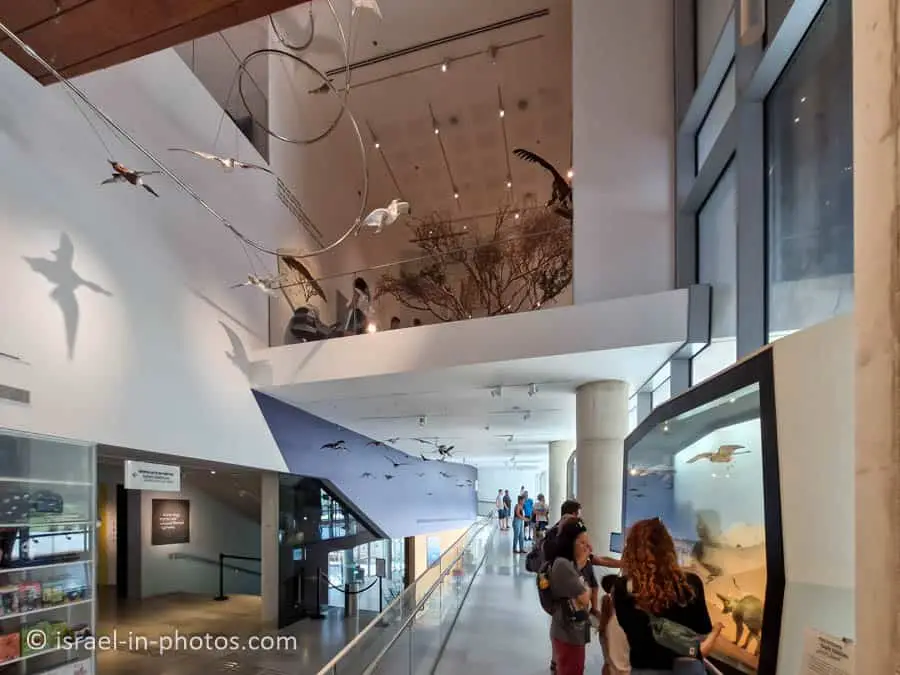
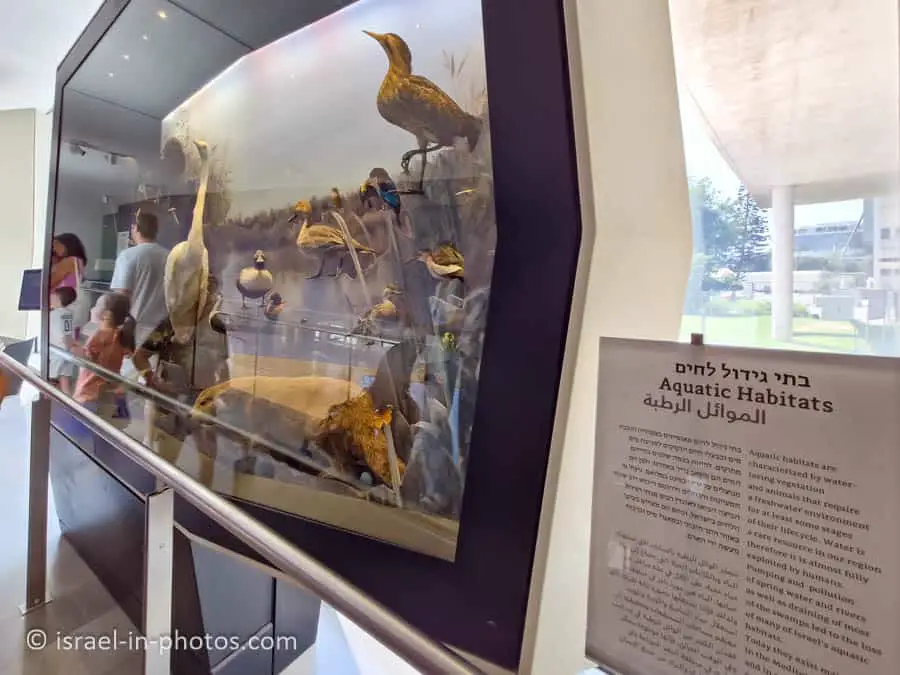

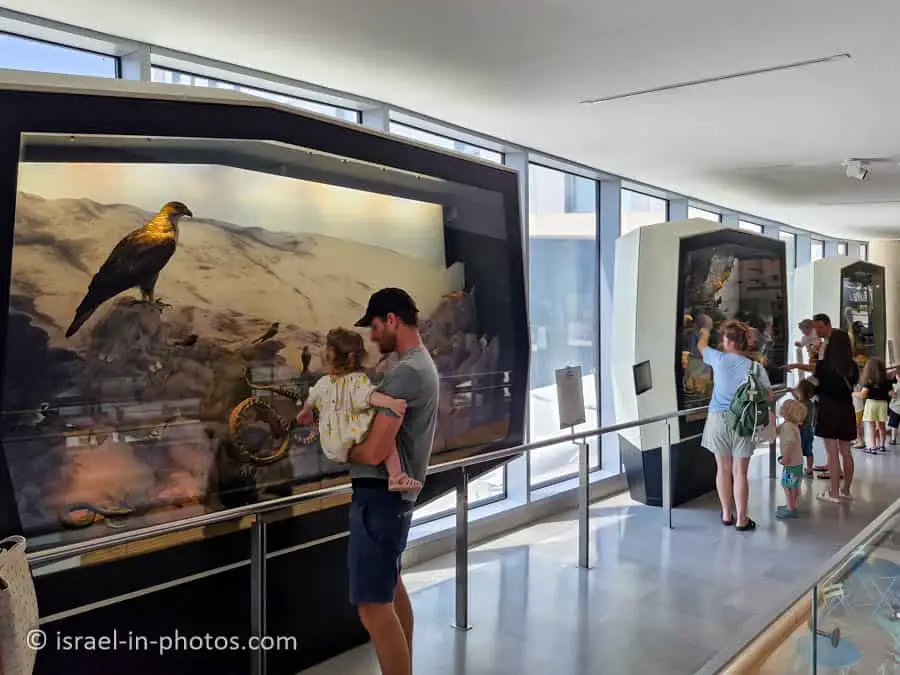
Form and Function
On the first floor, we saw the exhibition “Form and Function”.
Here is a quote from the official site:
Animals are adapted to their living environment. The spectacular diversity of body forms in the animal kingdom evolved over millions of years through a process dictated by heredity, and was also significantly influenced by the adaptation of animals to their living environment and survival needs, such as movement, defense, foraging for food, eating, and finding a mate.
The relationship between form, structure, and function led to resemblance between animals from genetically distant groups that cope with a similar living environment. For example, bats, birds, and butterflies belong to different groups, but they all fly using wings that developed over the generations.
The movement section of the exhibition demonstrates the visual resemblance between animals that move in the same way. In contrast, in similar organs, there has been a change of form to allow every animal to function in the most efficient way for itself. In the exhibition, you can see the marked differences in the skull structure of mammals and birds, according to the type of food they eat.
The exhibition presents ways of examining the morphology of an animal to learn about its way of life.
Like many exhibitions at this museum, it features interactive elements that children can enjoy. There are interactive tablets where kids can observe how different animals move, touch the bones of various animals to feel the difference in weight, and explore more.
Here are several photos from that exhibition:
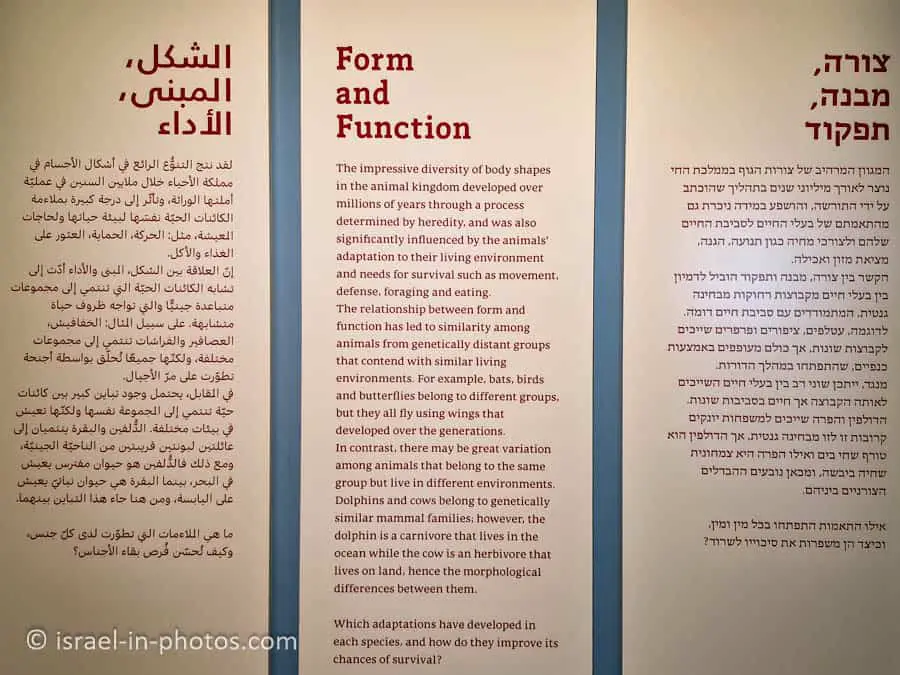
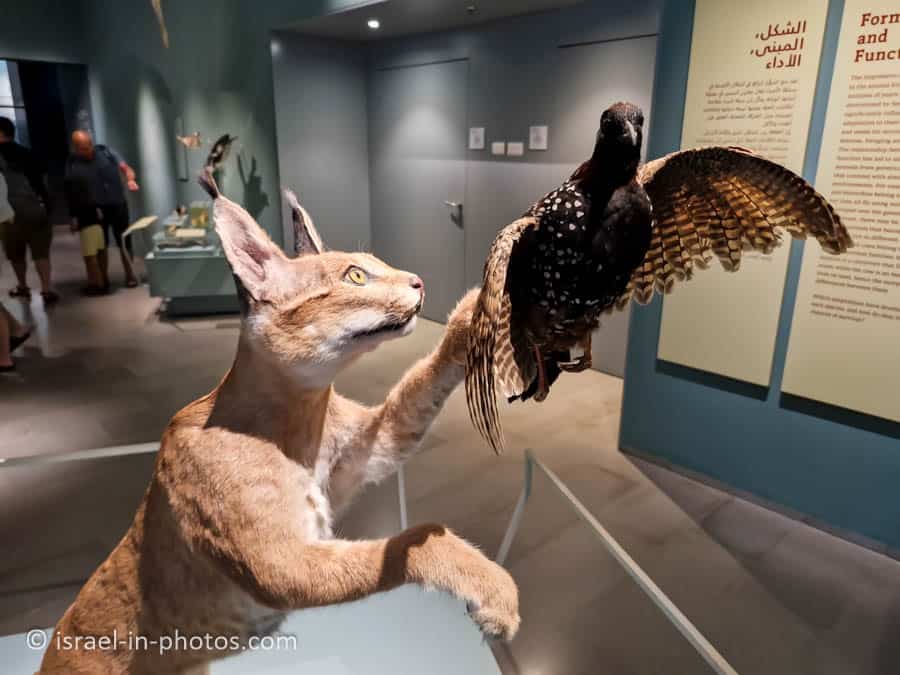
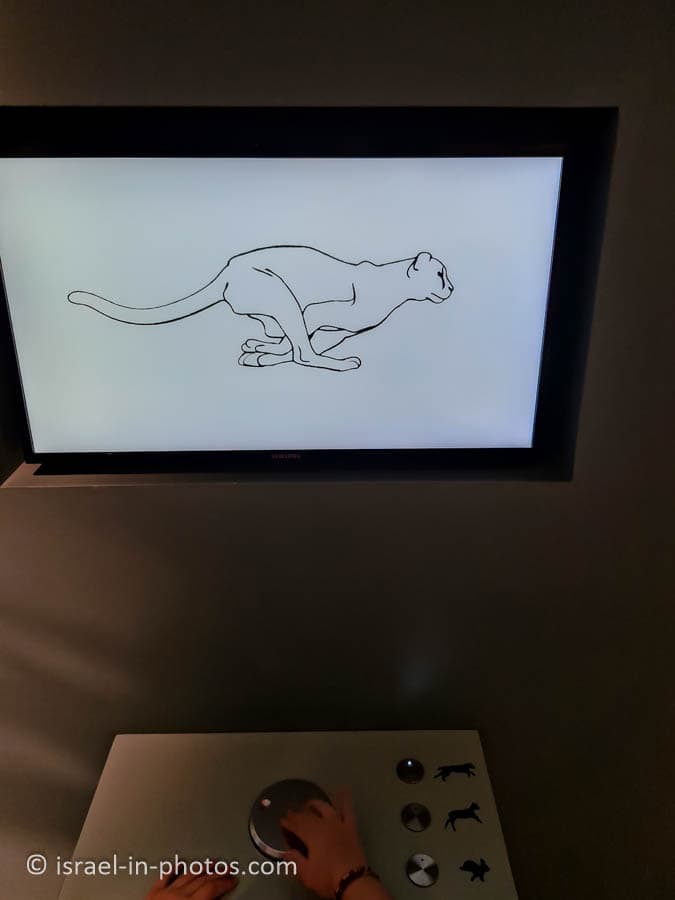
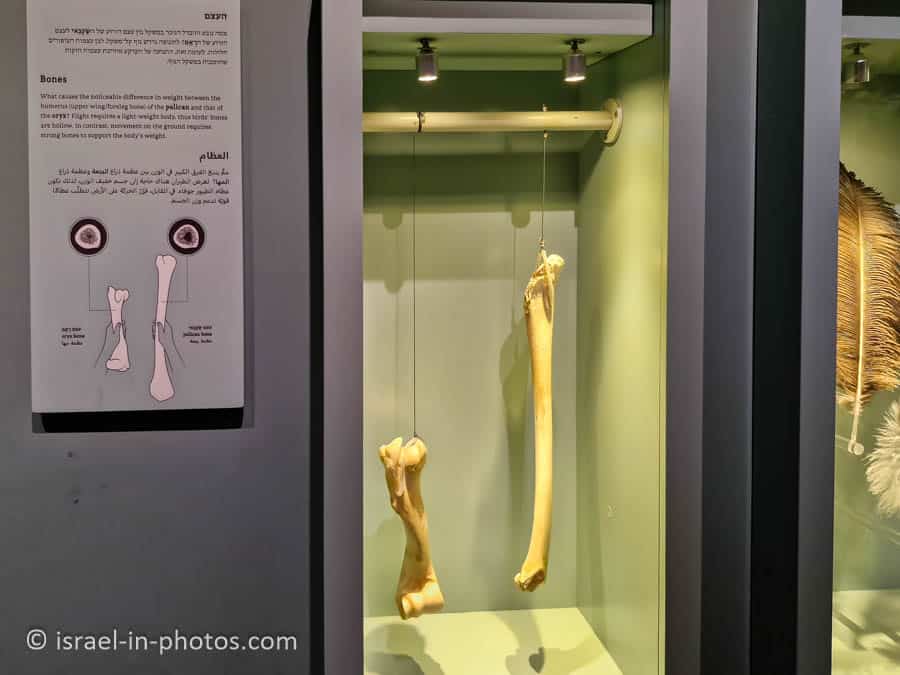
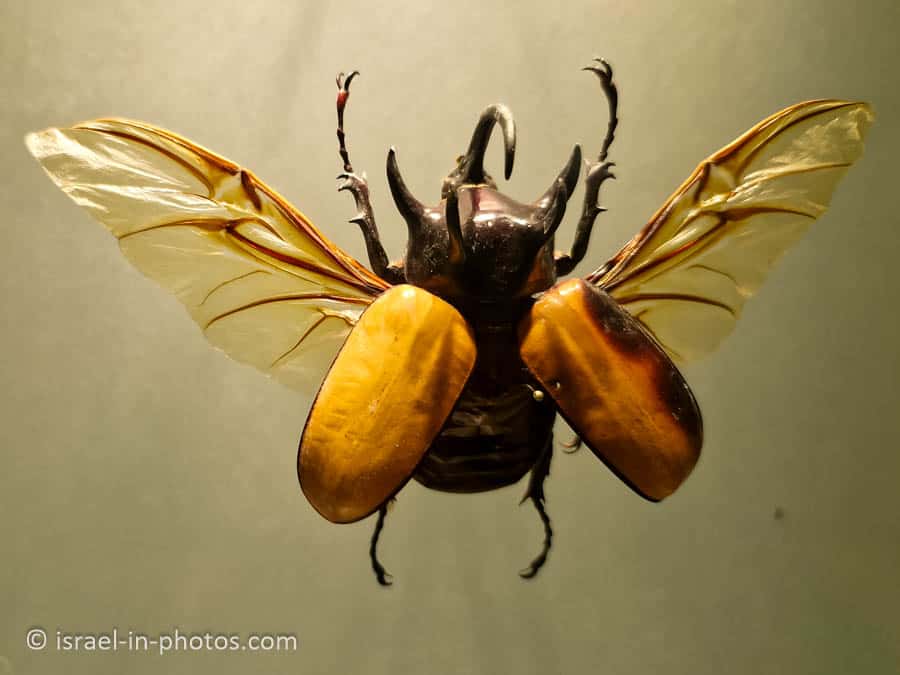

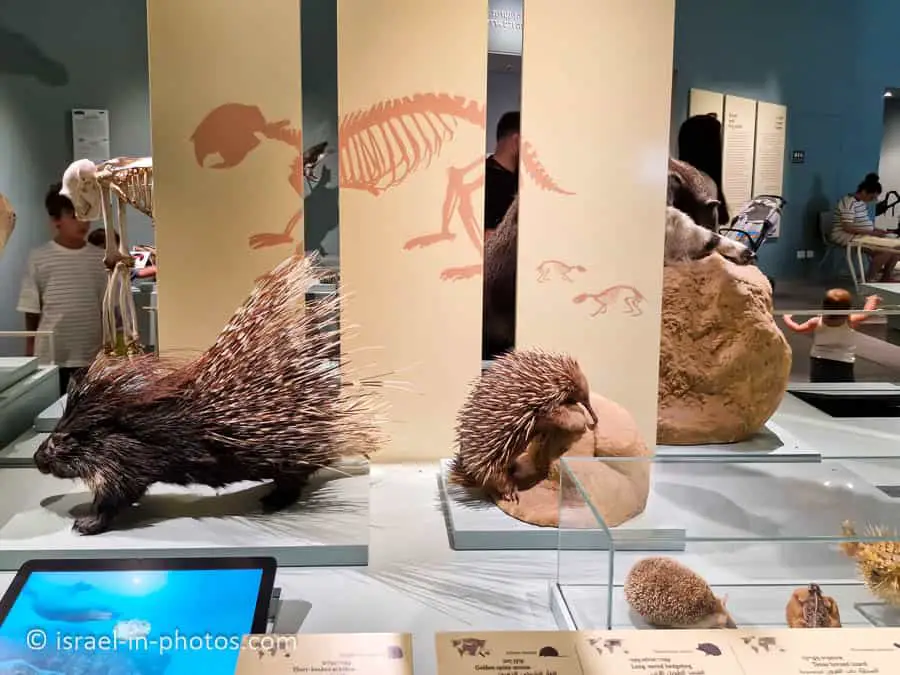
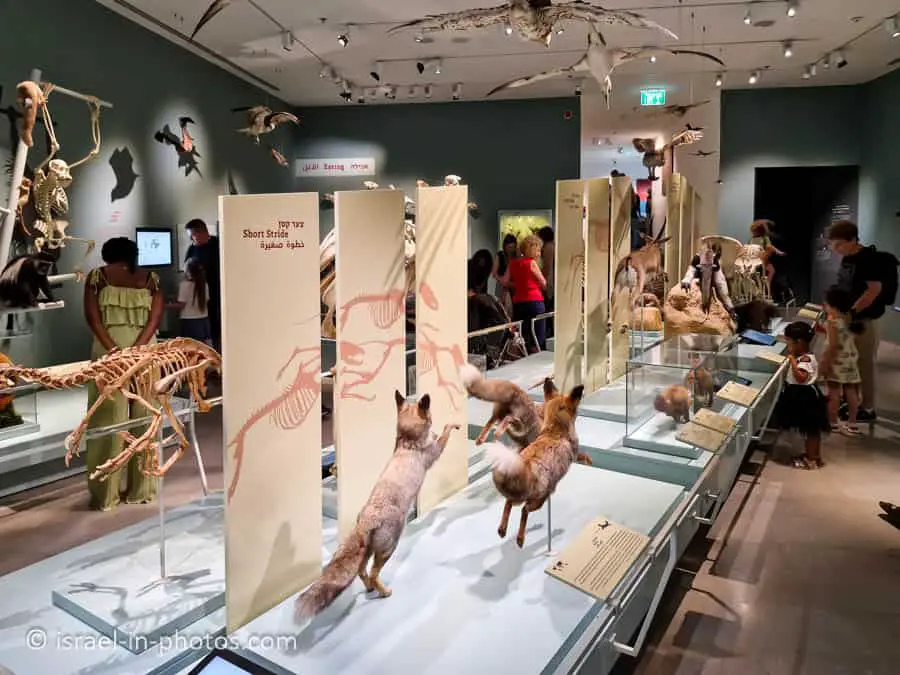

The Human Impact
The next exhibition talked about the human impact. This included pollution, deforestation, overfishing, extinction of species, and more.
Here is a quote from the official site:
The Human Impact exhibition is an interactive digital exhibition that presents the impact of humans on nature and biodiversity in Israel, by visually demonstrating the changes in nature in Israel and the region during the last 200 years.
Ecosystem changes and species disappearance are natural processes, but the increasing intervention of humans in nature accelerates these processes. These situations arise from habitat destruction, pollution, climate change, hunting, overfishing, and invasive species – these originate in industrialization, rising quality of life, world population growth, and consumption of natural resources.
For example, until the 12th century, lions lived in Israel around Mount Hermon, and in the coastal plain, Negev, Judaean Mountains, and Samaria. Intensive hunting, mainly by crusaders who came to Israel during this period, led to the extinction of this apex predator from Israel’s landscapes.
Biodiversity is a general name for the diversity of life forms, species, and landscapes on Earth. This is the infrastructure of our life, since nature provides oxygen, water, food, and medicinal compounds that humans consume around the world. Population growth in Israel and the acceleration of development and construction, agriculture, and industry during the last 150 years have led to environmental destruction and a dramatic reduction in biodiversity; therefore, conservation of this diversity is a challenge for us all – for our own wellbeing in the present and for future generations.
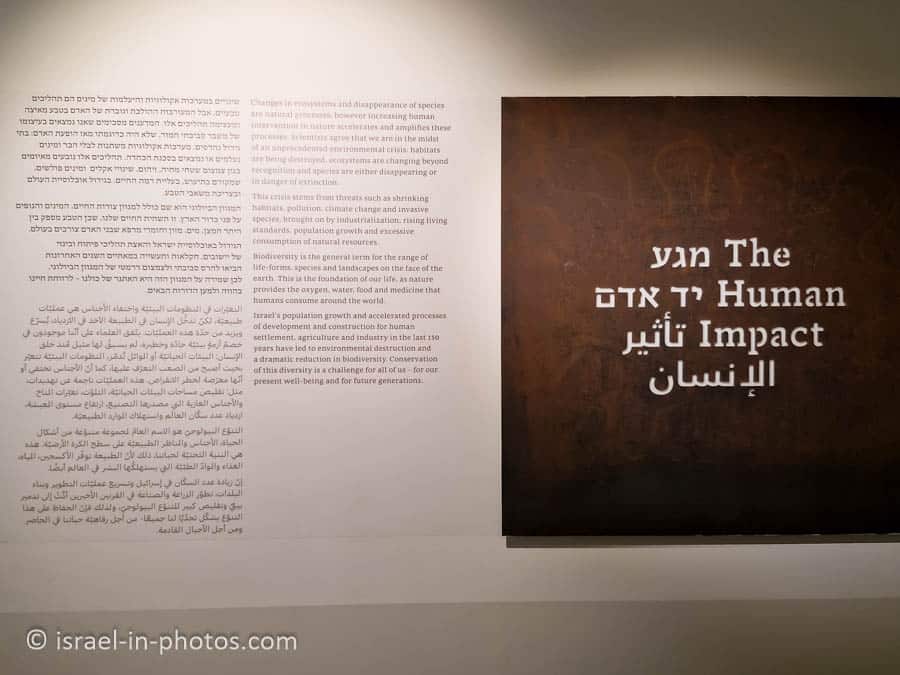
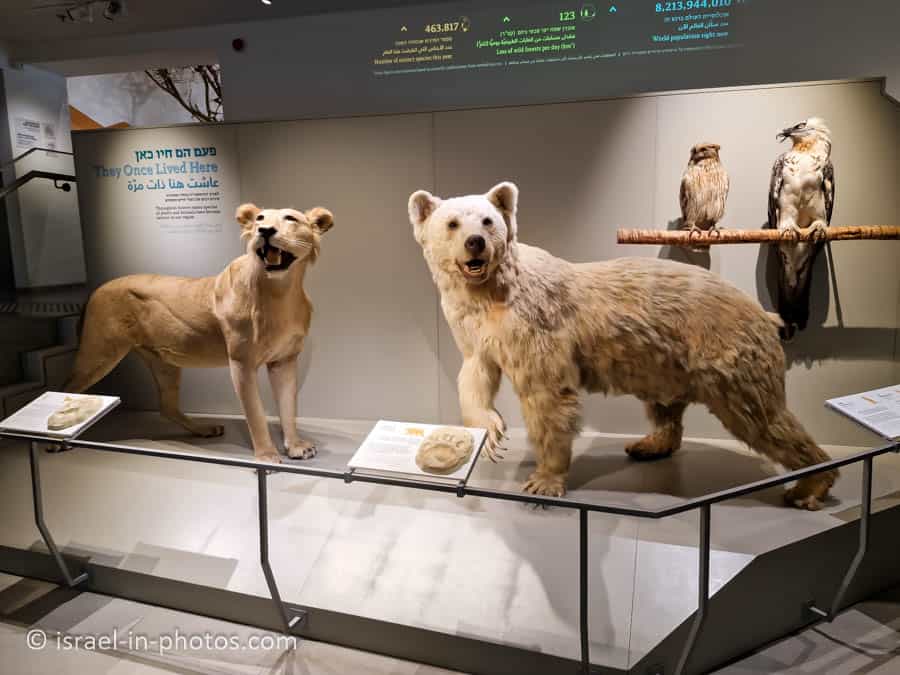
We learned by using interactive exhibits, reading signs, and watching a short movie about sea pollution. And continued to the next exhibition.
The Web of Life
In the next exhibition, we learned about the interconnection of species. For example, some species help others to breed. And some species help with sanitation.
Here is a quote from the official site:
Life in our world is based on a branched network of connections and interactions between different organisms. Basic needs such as food, reproduction, defense, and dispersal are essential to the existence of life and are facilitated by the diverse connections between organisms. These are sometimes predator-prey relationships, sometimes exploitative or parasitic relationships, and sometimes mutualistic relationships, in which both sides benefit.
Like all organisms, humans also cannot live alone on Earth. To ensure the existence of the human species, we need interactions with all of the natural systems as healthy, diverse, and functioning systems.
What will you see in the exhibition?
At the entrance to the exhibition, you will meet an acacia tree and the web of life that takes place around it in the desert. Further on, you’ll discover the diversity of connections between different organisms in nature: systems of connections that create the food web and connections between a range of organisms that help each other for reproduction, defense, and dispersal. The exhibition finishes with a display that weaves the diversity of connections into a multi-participant, complex system, and emphasizes how our existence depends on the healthy functioning of all systems in nature.
Here are several photos from that exhibition:
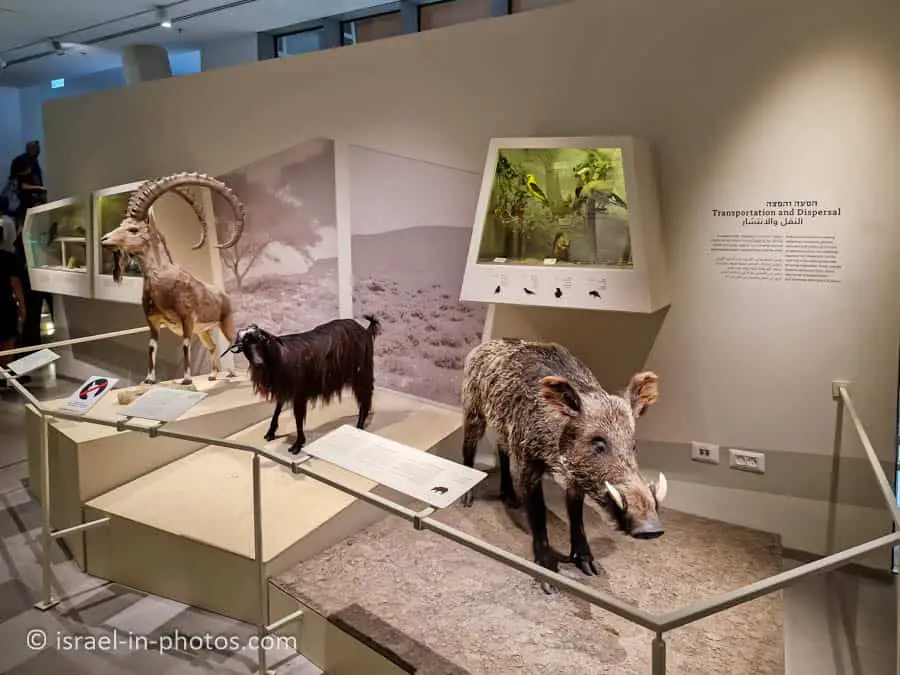
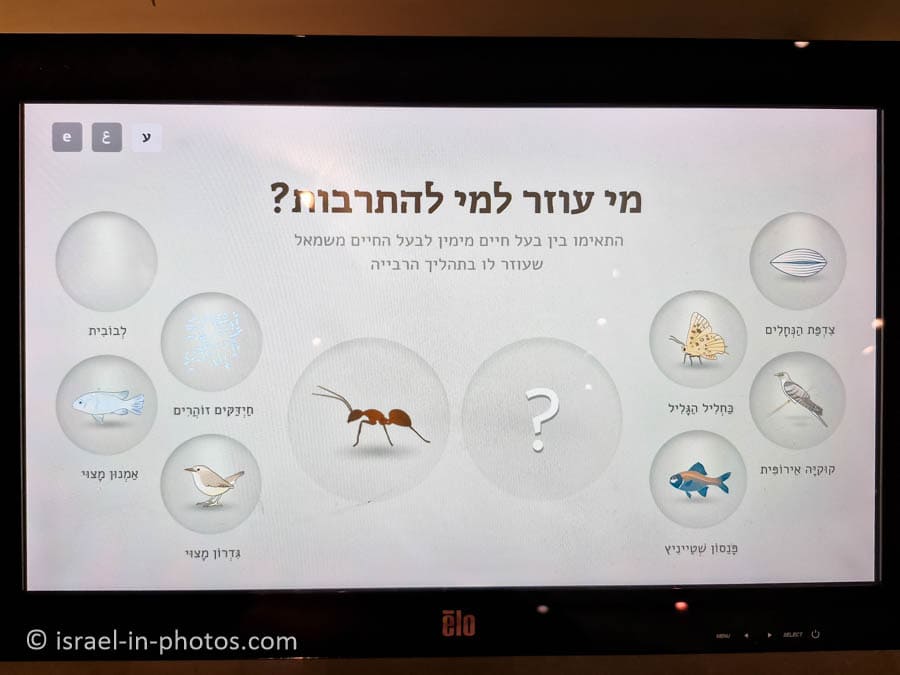

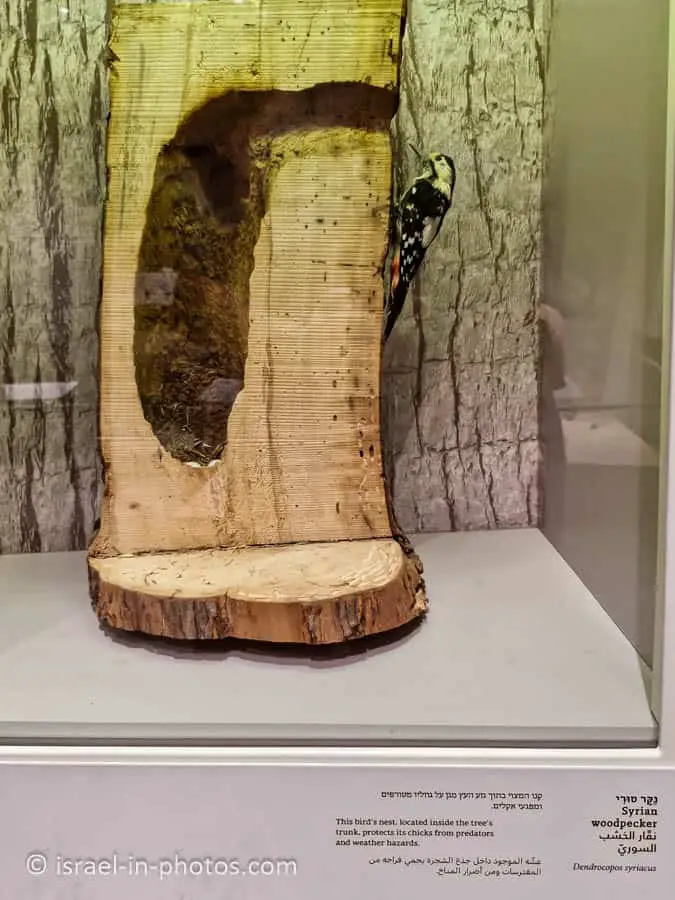
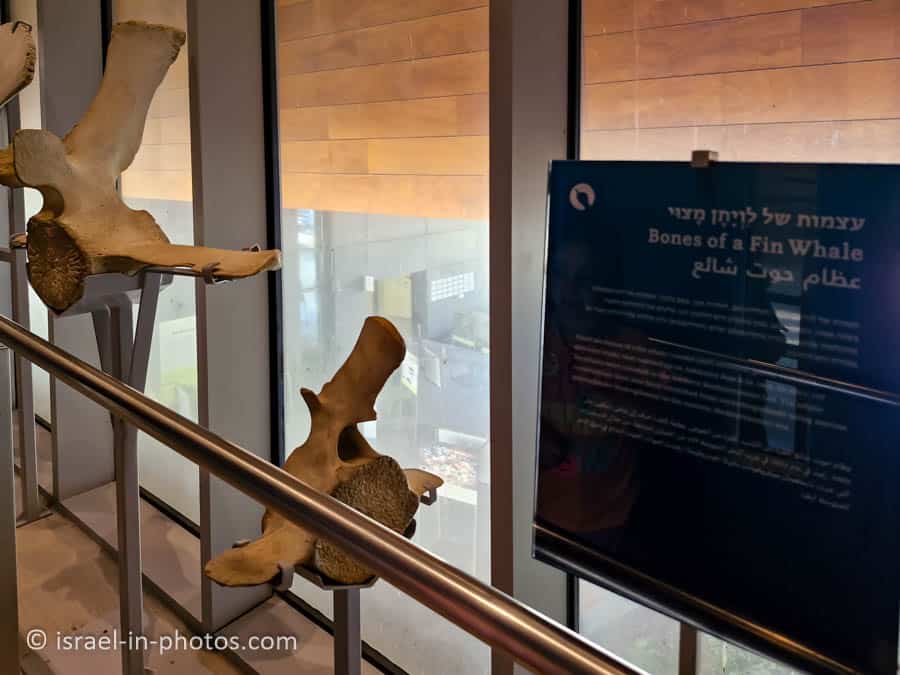
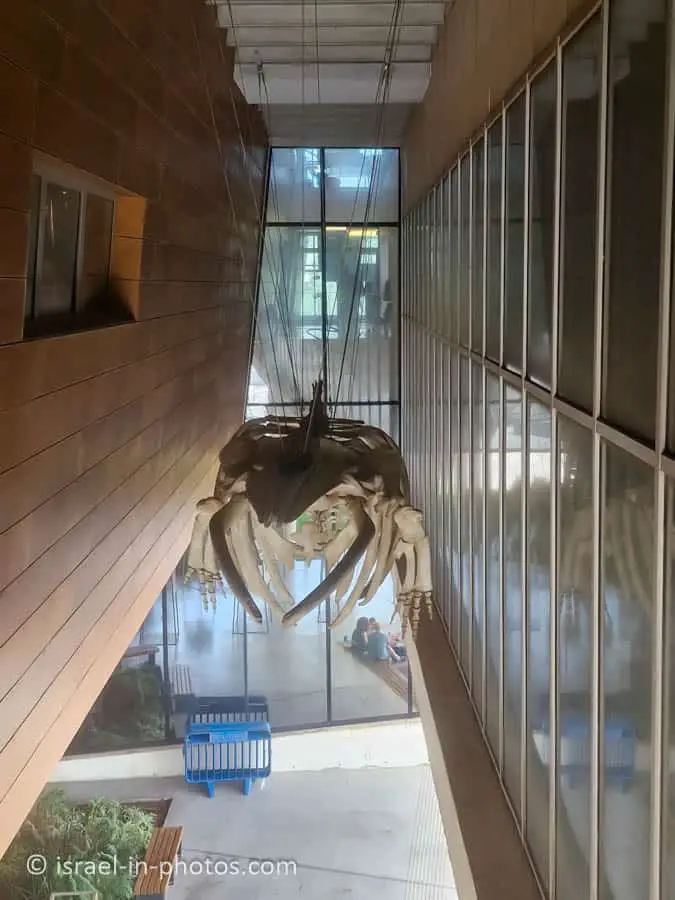
Treasures of Biodiversity
The Treasures of Biodiversity exhibition was the most impressive for me. When this museum opened, they said that one of the exhibits was the last crocodile that was hunted at Taninim Stream about a century ago. I also heard the same story when we visited Taninim Stream Nature Reserve.
And in this exhibition, we saw the collection of Father Ernst Schmitz. And in that collection, you can see the last crocodile.
Here is a quote from the official site:
The natural history collections of the museum include more than five and a half million items that were collected in our region during the last century, and document the world of fauna and flora and the evolution of the human species over thousands of years. These collections, recognized as national collections, grow and are renewed constantly, and comprise a research infrastructure for scientists in Israel and around the world.
Over 1000 items are displayed in the exhibition, some of them rare, such as a leopard collected in the Jerusalem Hills and the last crocodile seen in our country. These items document the animals that went extinct in our region, and they belong to the historic collection of Father Schmitz. Schmitz, a priest and zoologist, studied animals in Israel and its environs and left behind a collection that provides rare documentation of the biodiversity that existed here about a century ago.
As part of the exhibition, nine collections selected from the museum’s twenty-four collections are present here; they provide a close encounter with dozens of mammals, birds, and fish, and with hundreds of insects, corals, crustaceans, and mollusks. These impressive and extraordinary items tell the story of research and discoveries by Israeli scientists, made possible by the existence of this national treasure.
Here are several photos from that exhibition:
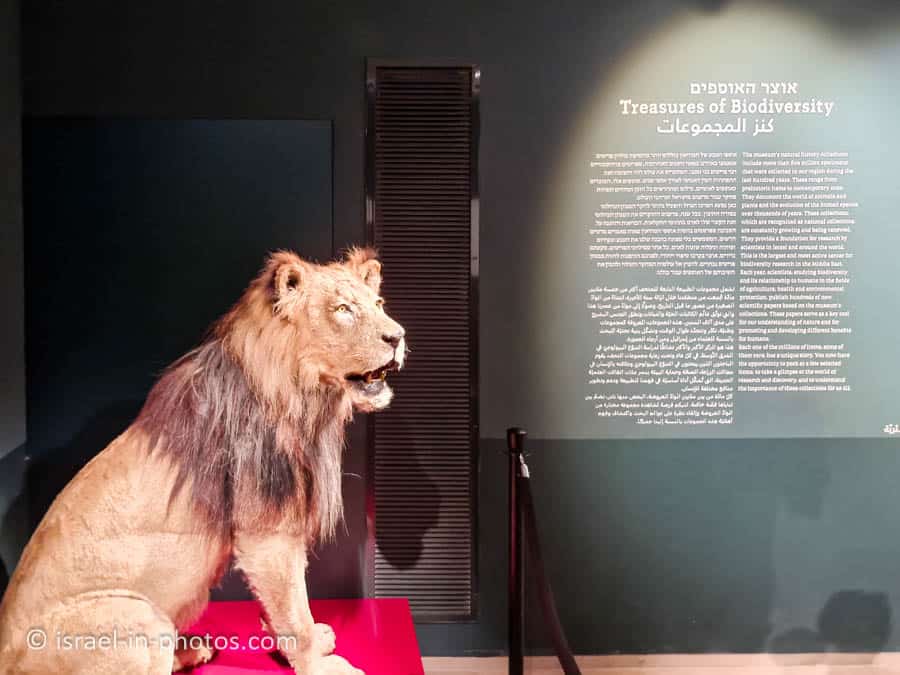
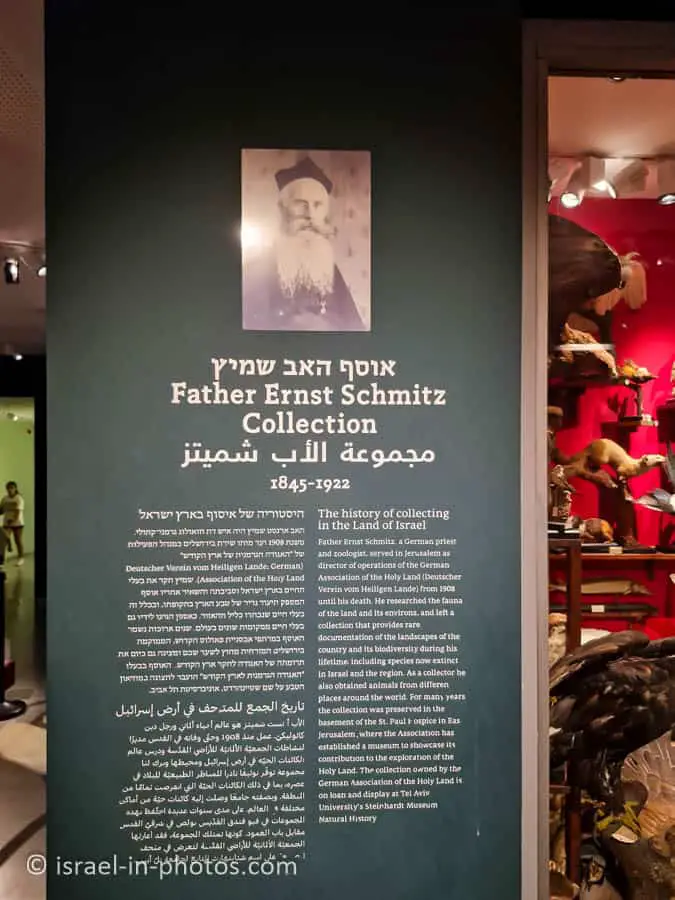
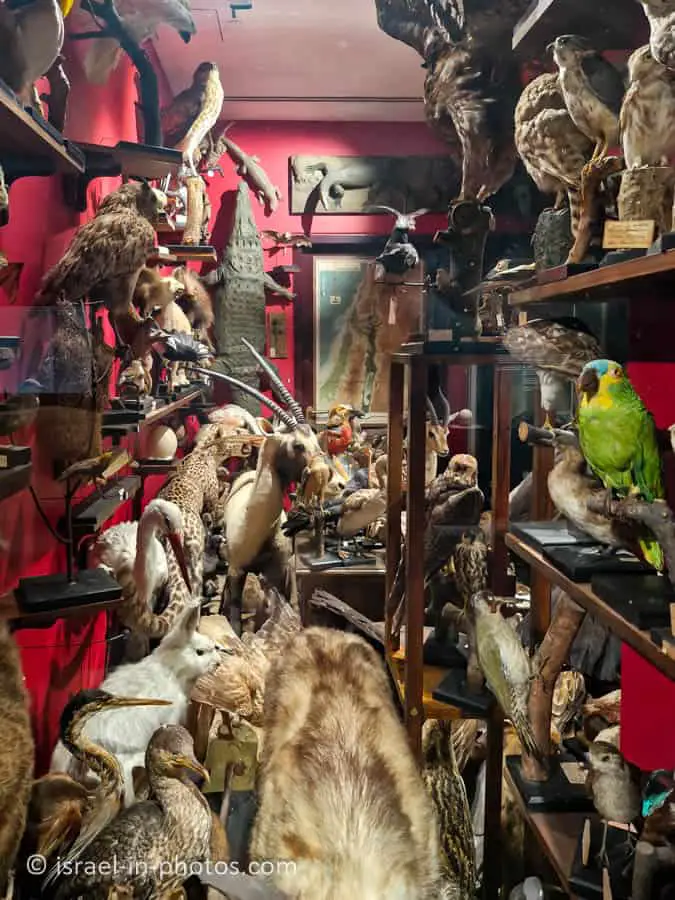
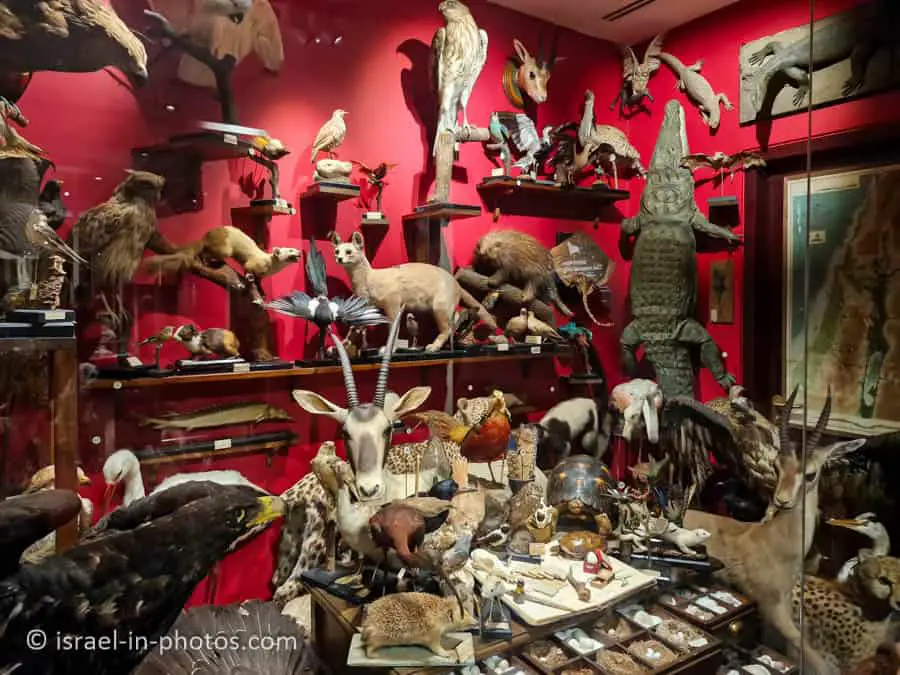
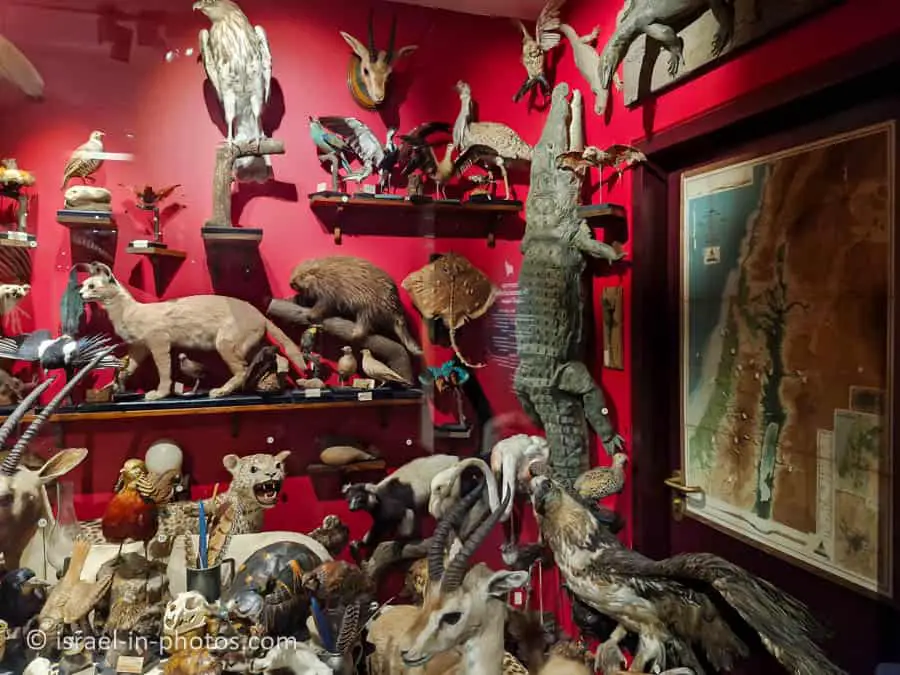
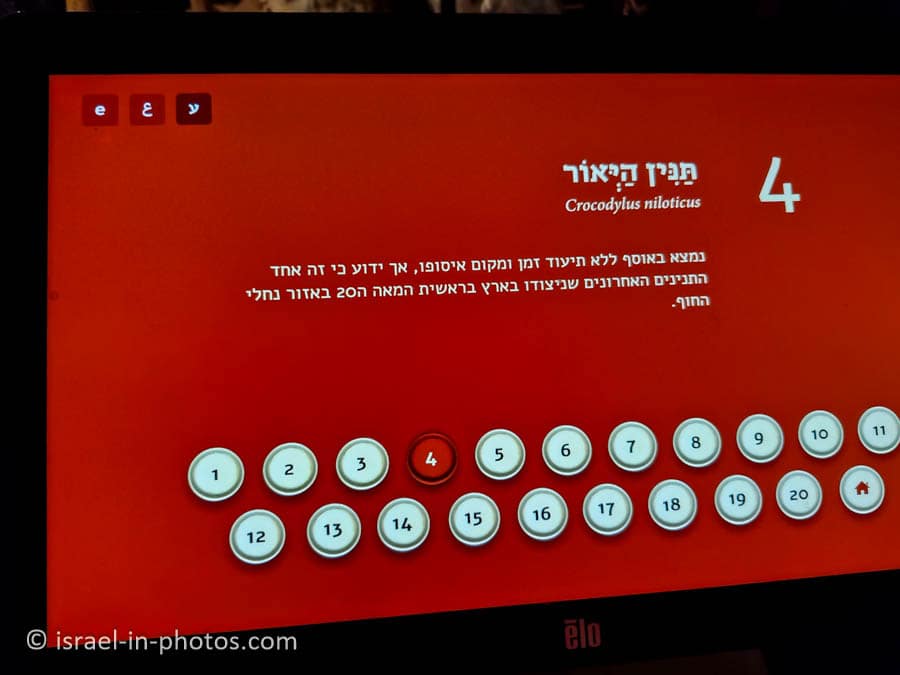

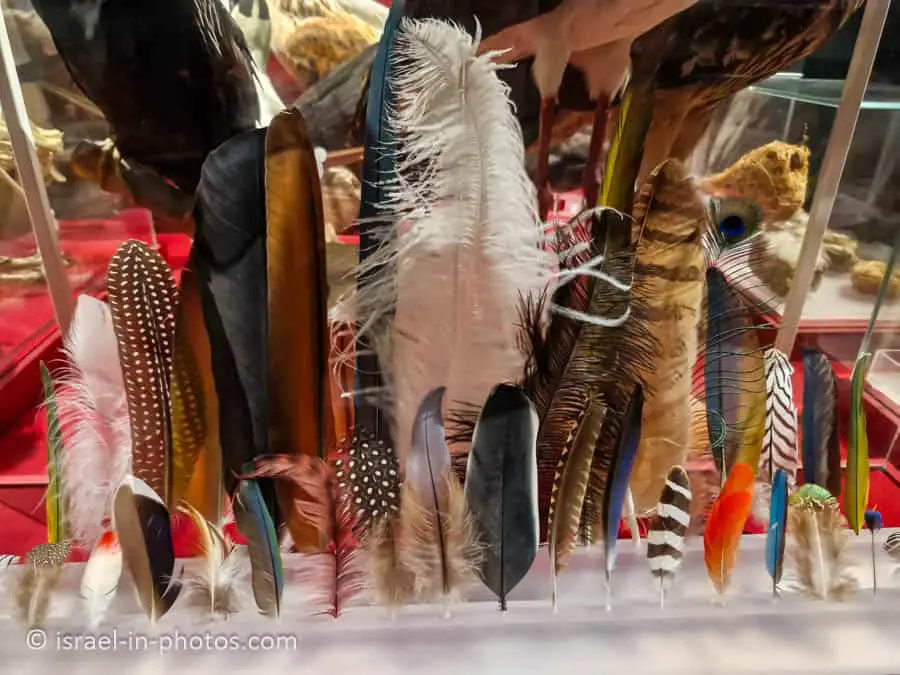
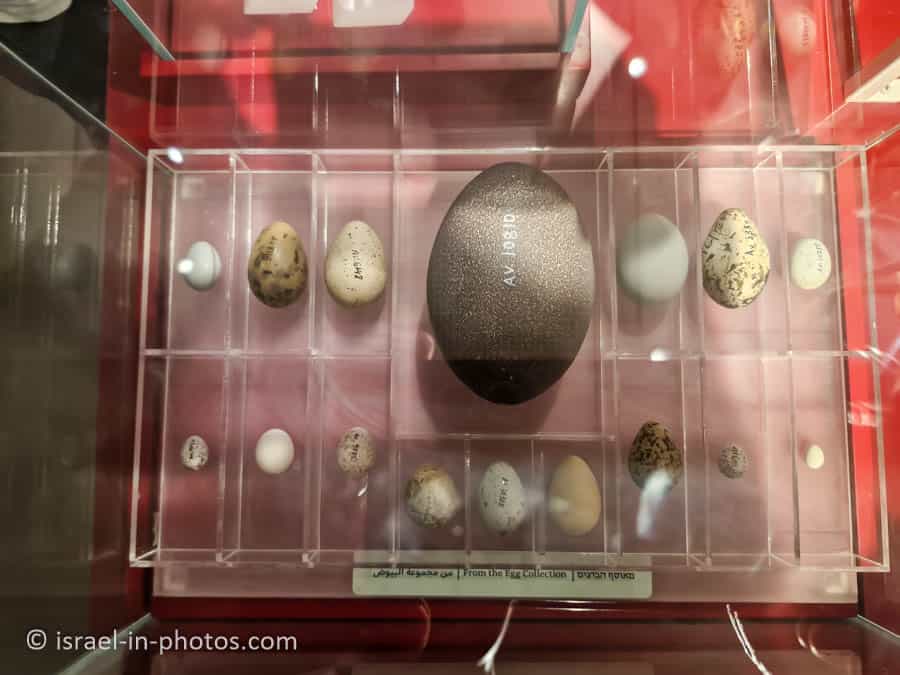
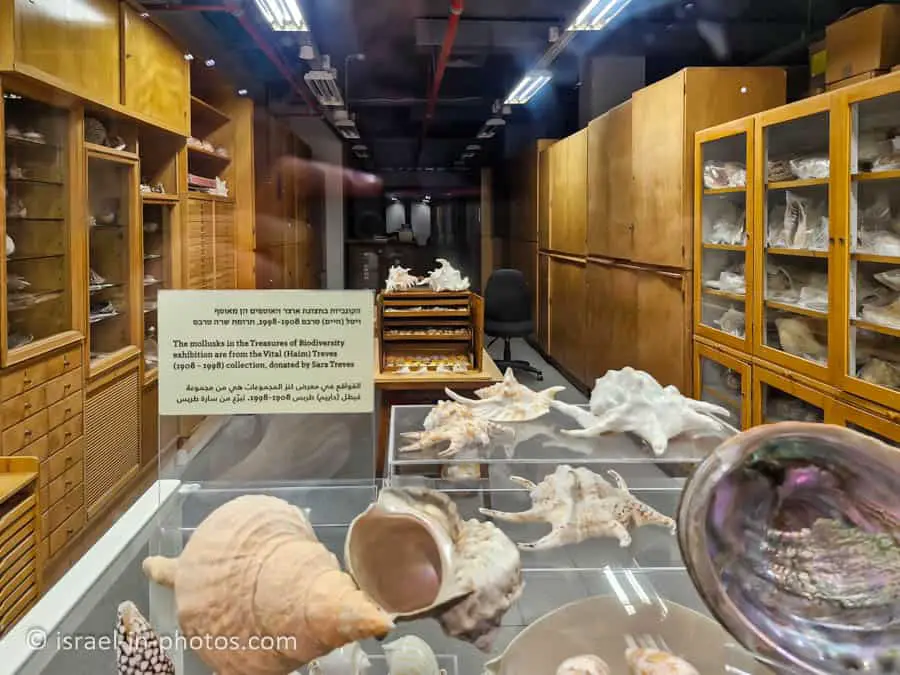
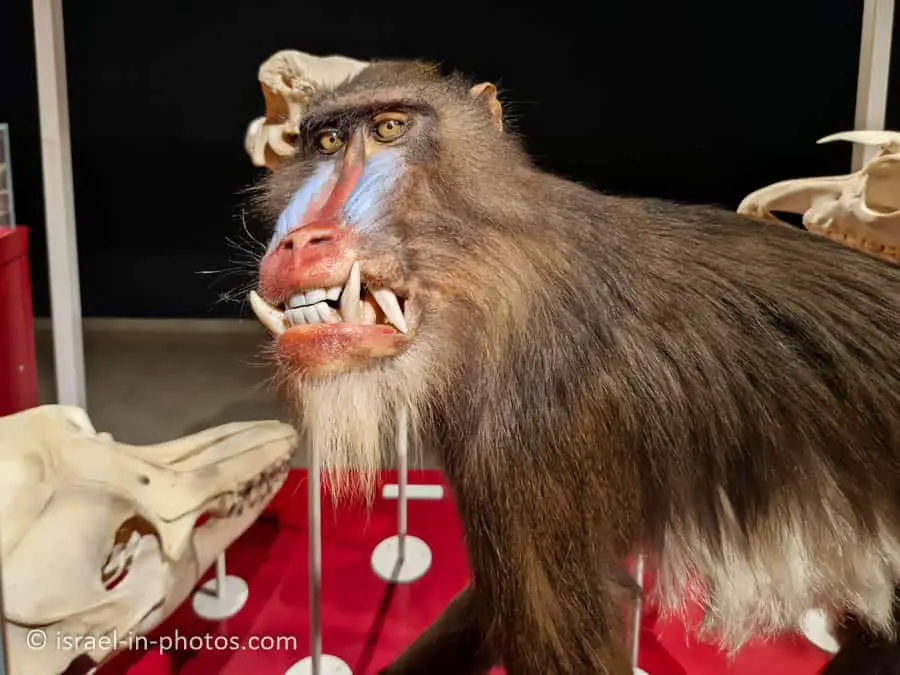
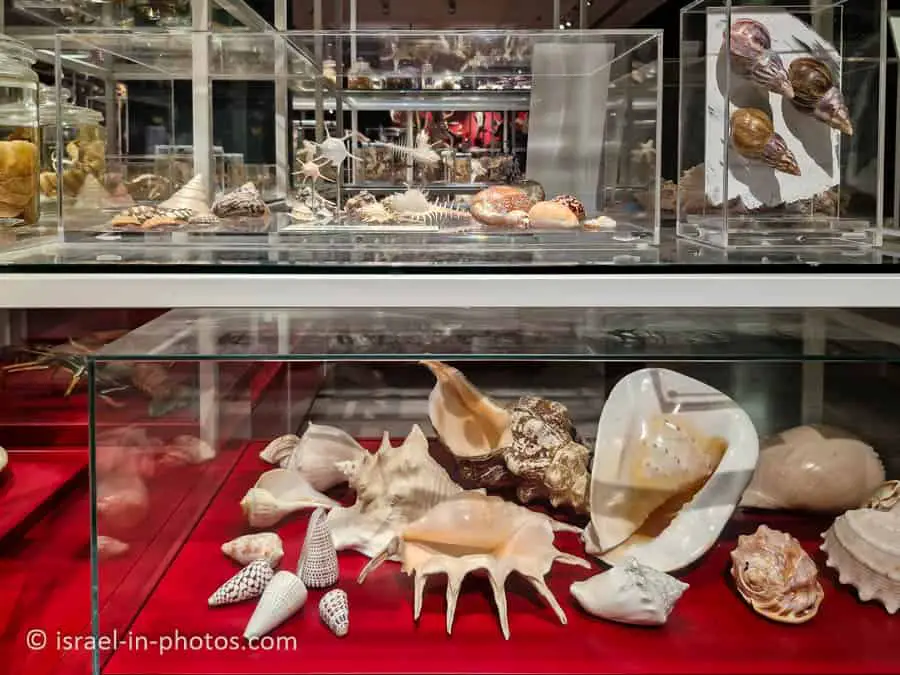
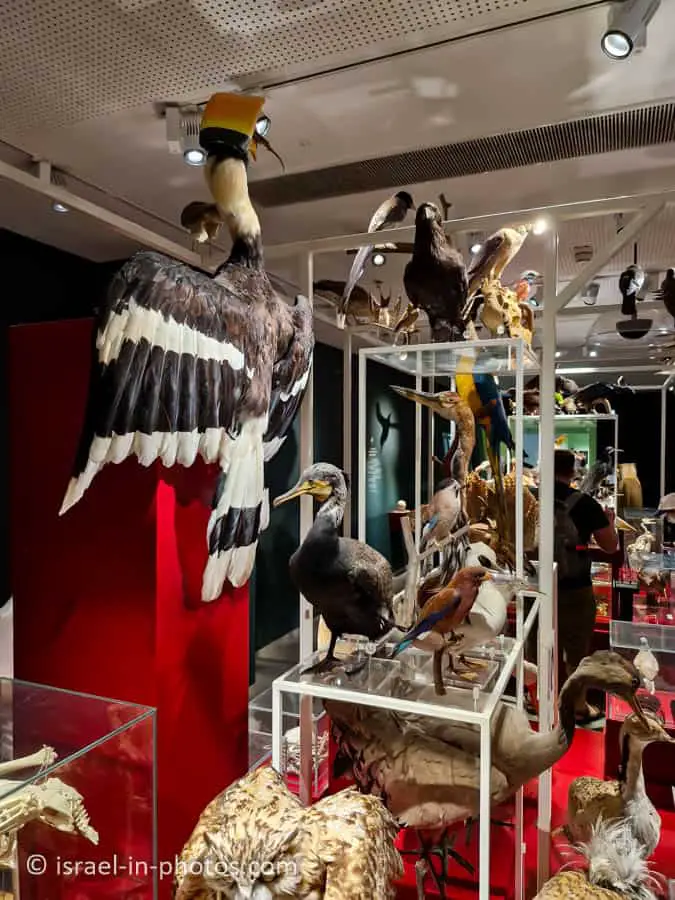
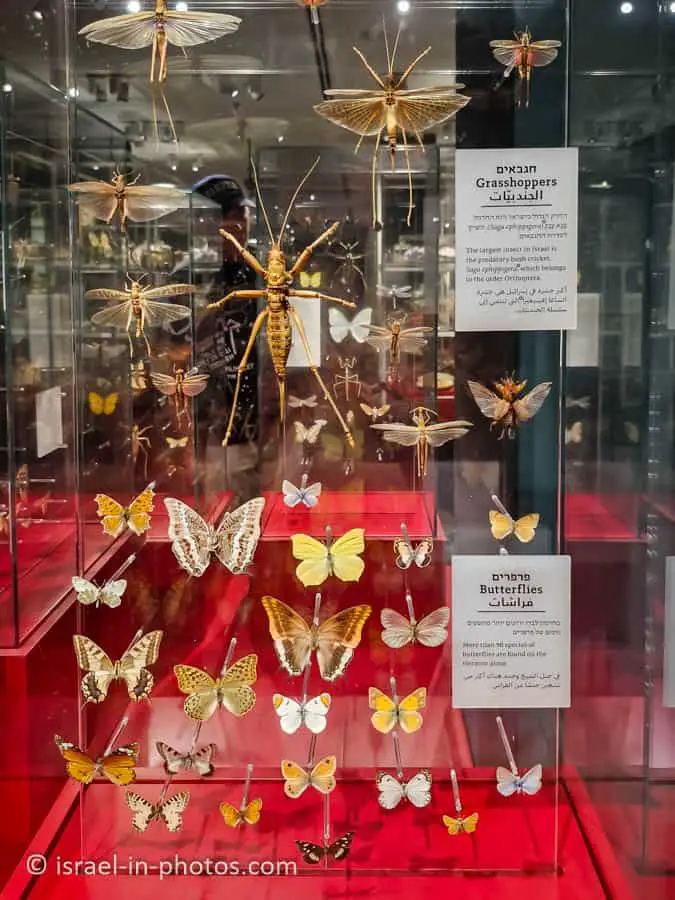
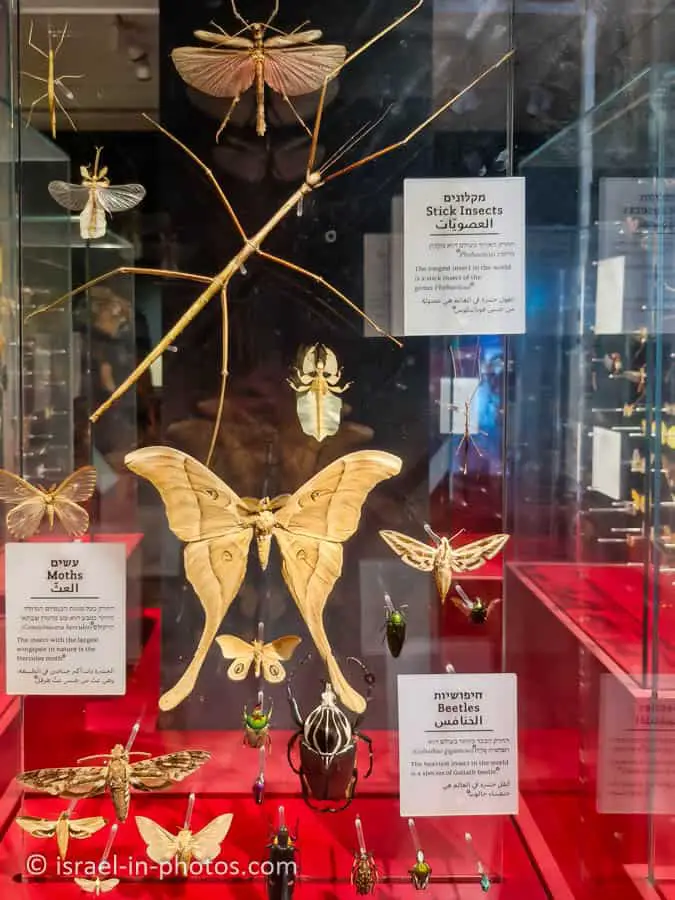
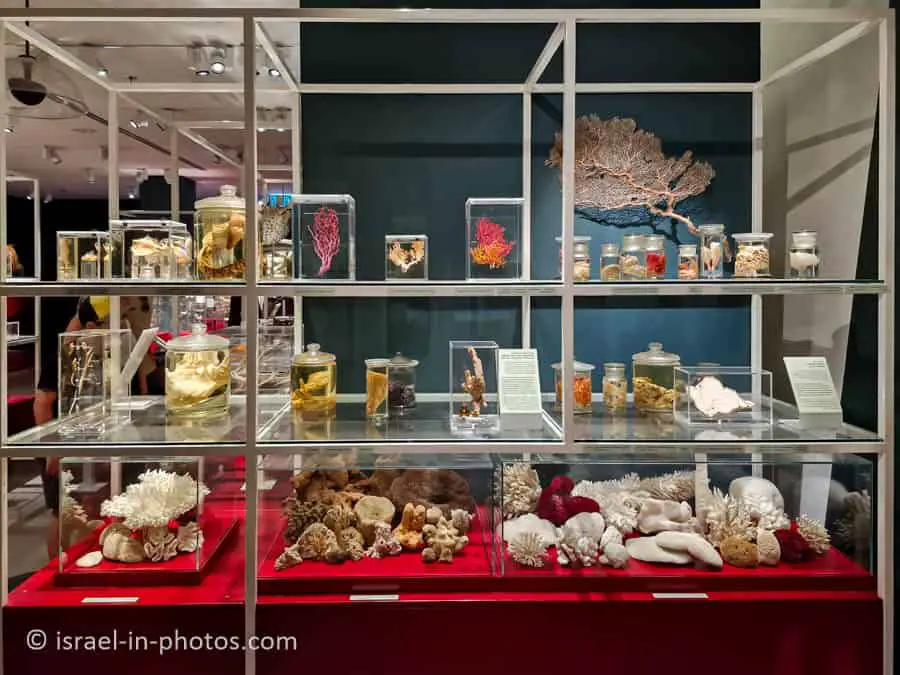
Before visiting the next exhibition, I want to mention that there is a balcony near the last exhibition. Many people enjoy picnics there, and I have included several photos from the balcony.
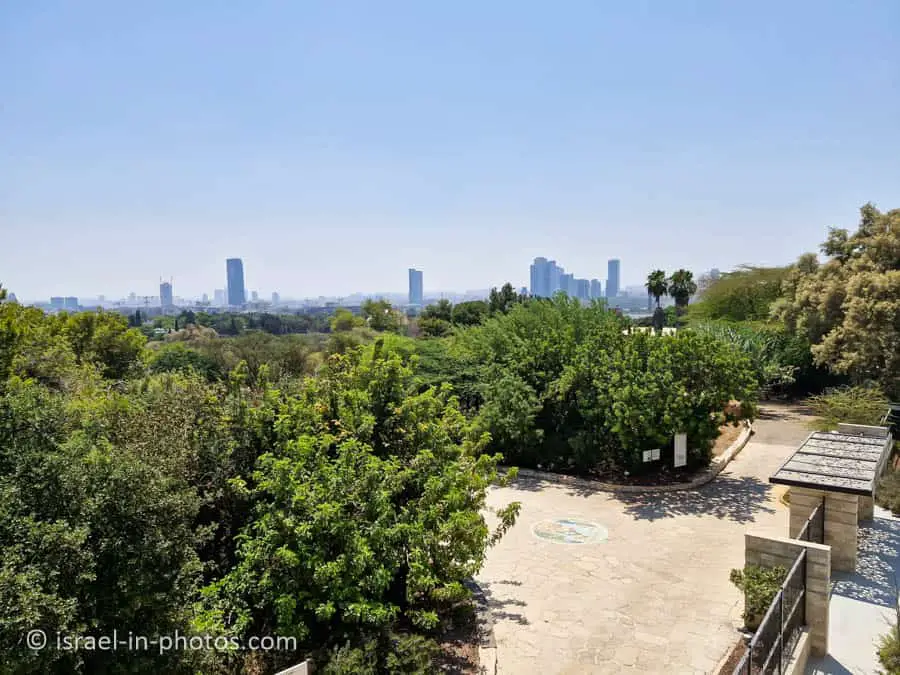
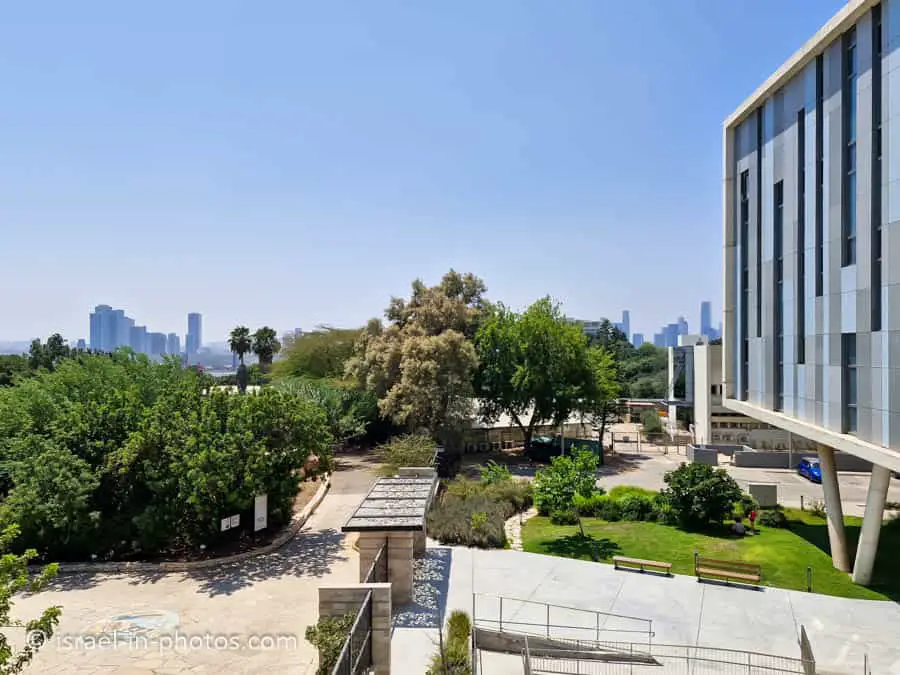
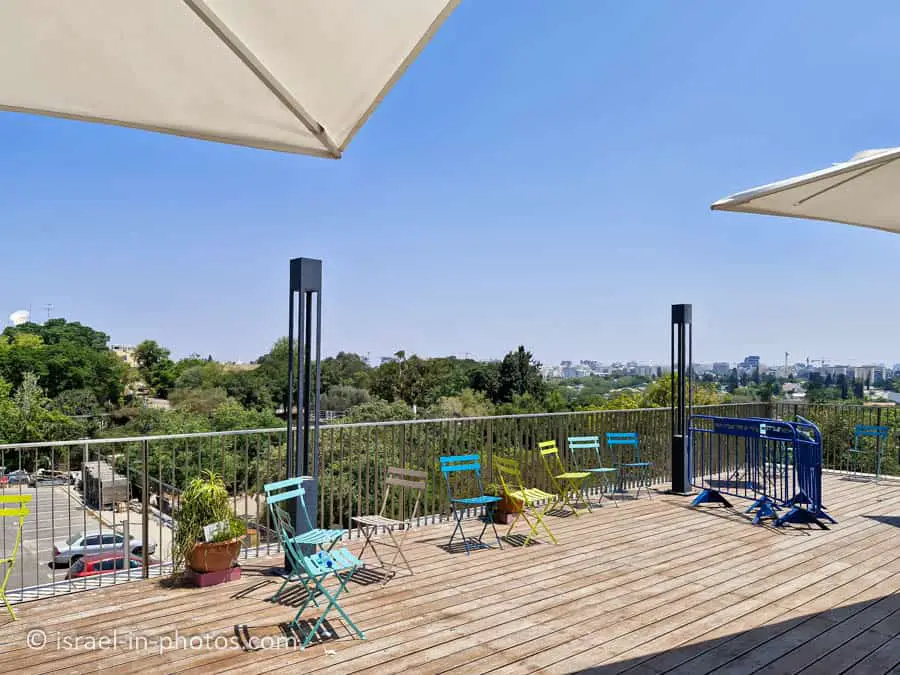
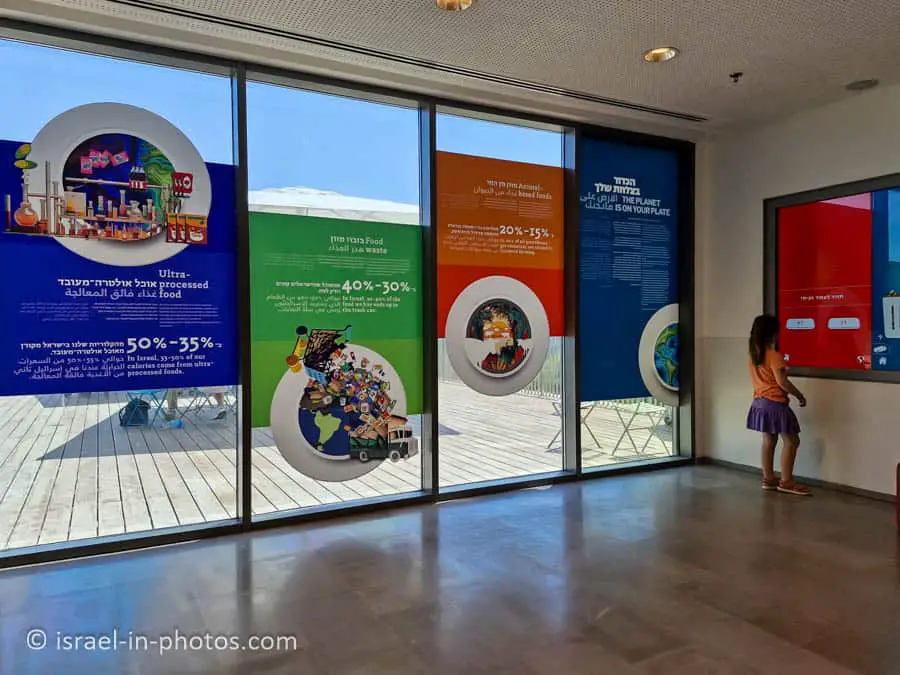
Song of the Corals
Our next exhibition was titled “Song of the Corals.” However, my youngest daughter was getting tired, so we moved through it quickly.
Here is a quote from the official site:
The exhibition “Song of the Corals” invites visitors to experience the underwater world and be amazed by it, contemplate the beauty of the coral reef, and marvel at the complexity and uniqueness of this important habitat, which is usually completely hidden from view.
The artistic work of Tzuri Gueta, which was produced specifically for this exhibition, seeks to intensify the experience. The display is affected by and follows the beauty, form, and texture of the coral reef and its inhabitants, complementing the amazing experience that accompanies those who dive down among the corals.
Here are several photos from that exhibition:
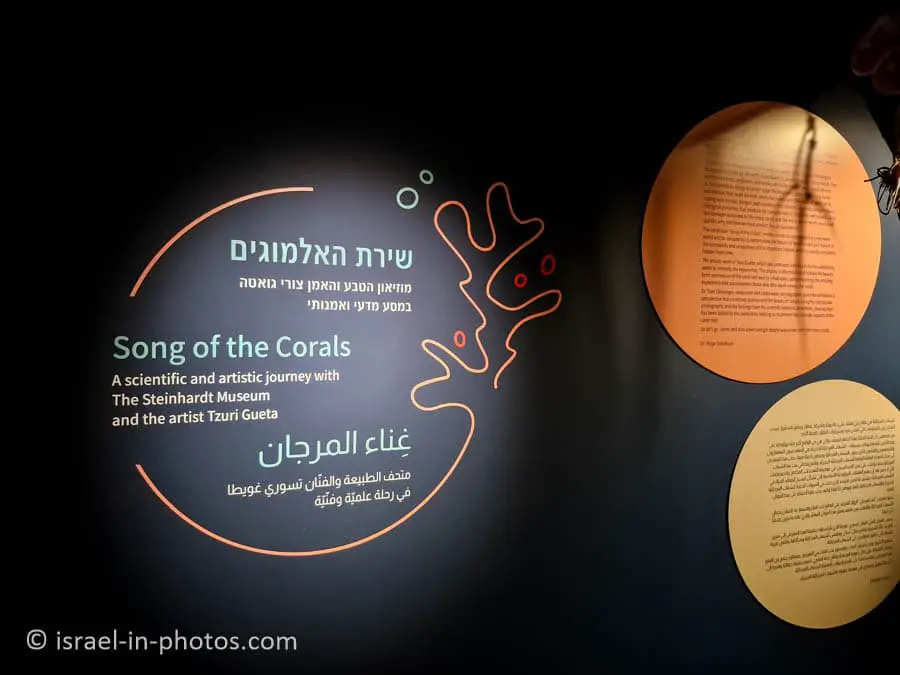
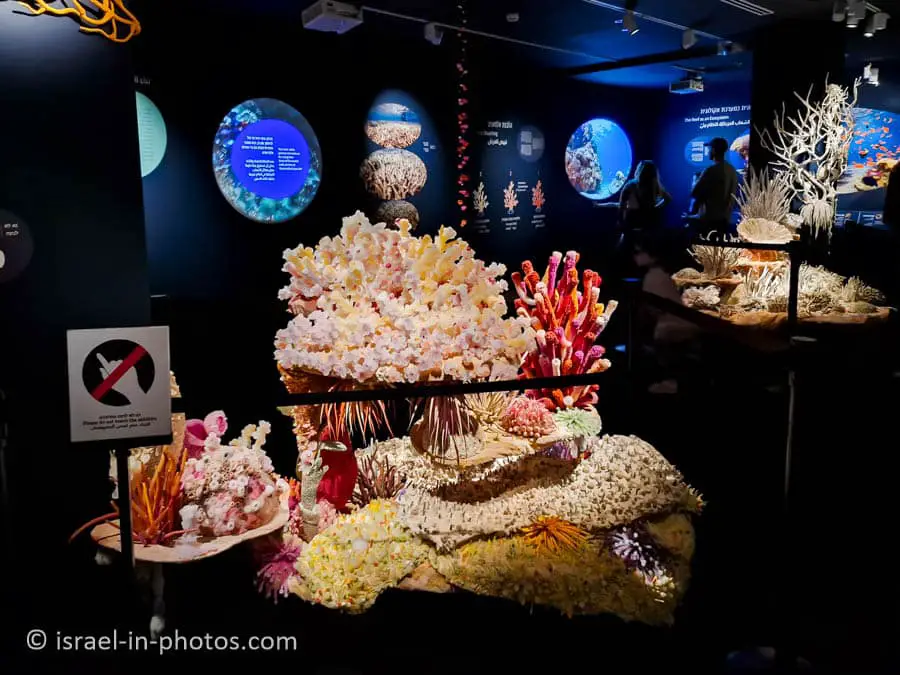
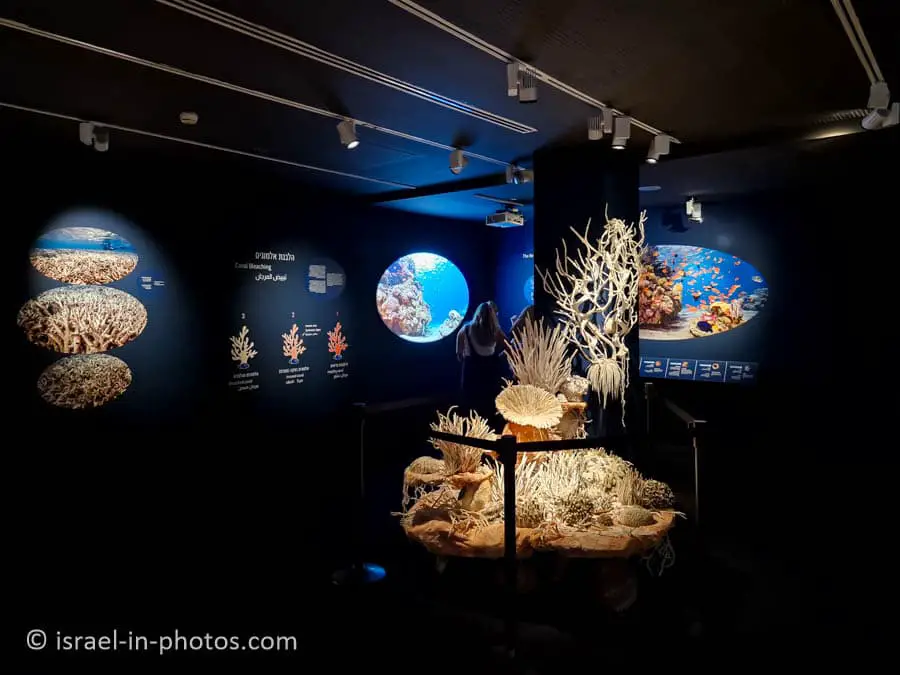
What Makes Us Human?
On the fourth floor, we saw an exhibition called “What Makes Us Human?”
Here is a quote from the official site:
When they begin investigating the development of the human species, scientists rely mainly on biological (fossils) and cultural (stone tools, for example) remains. The exhibition – What Makes Us Human? – displayed in the Dan David Center for Human Evolution and Bio-History Research, at the Steinhardt Museum of Natural History, displays the main groups of hominins (human species) that lived during the last seven millions of years, and describes the leading milestones in human evolution – tools, language, fire etc. – that provided humans with the abilities that have formed the basis of human achievement until today.
Here are several photos from that exhibition:
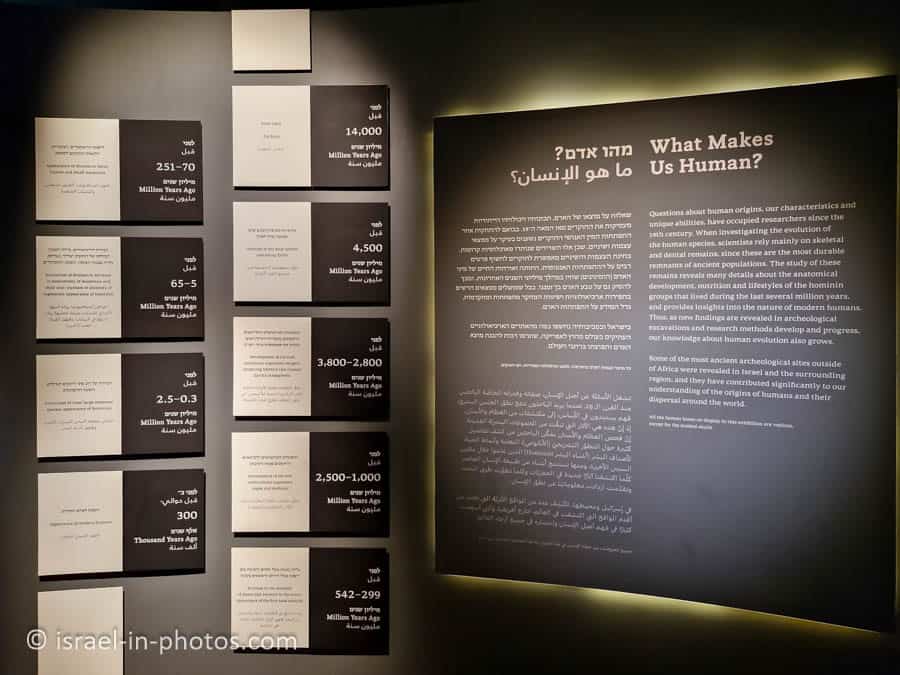
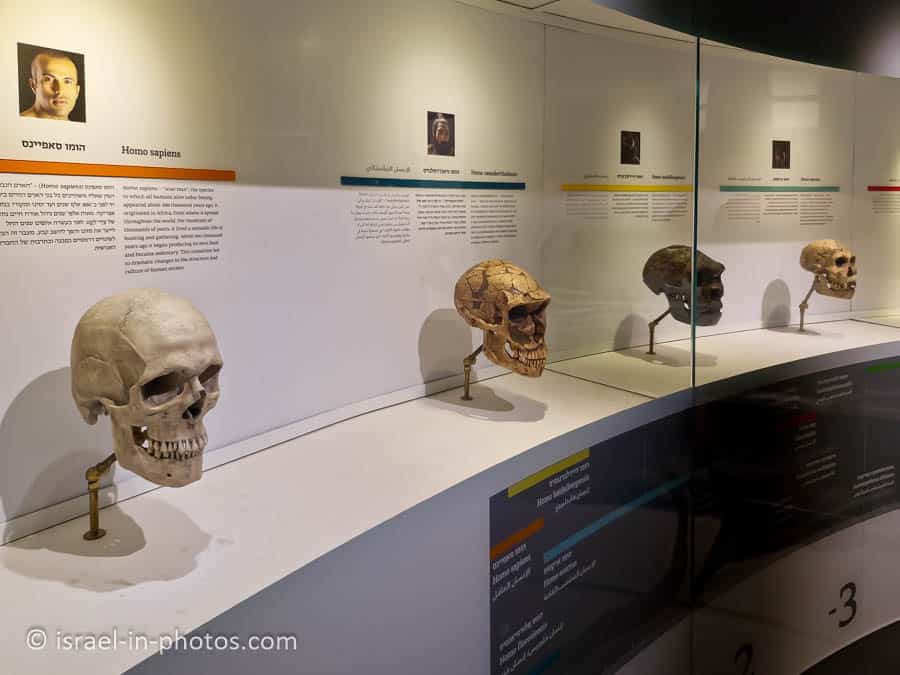
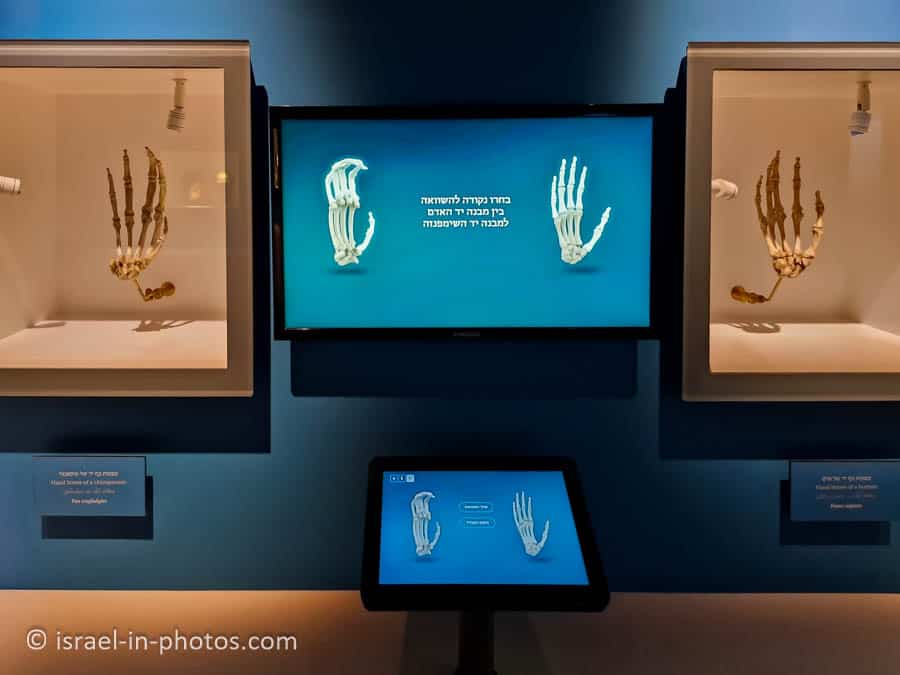
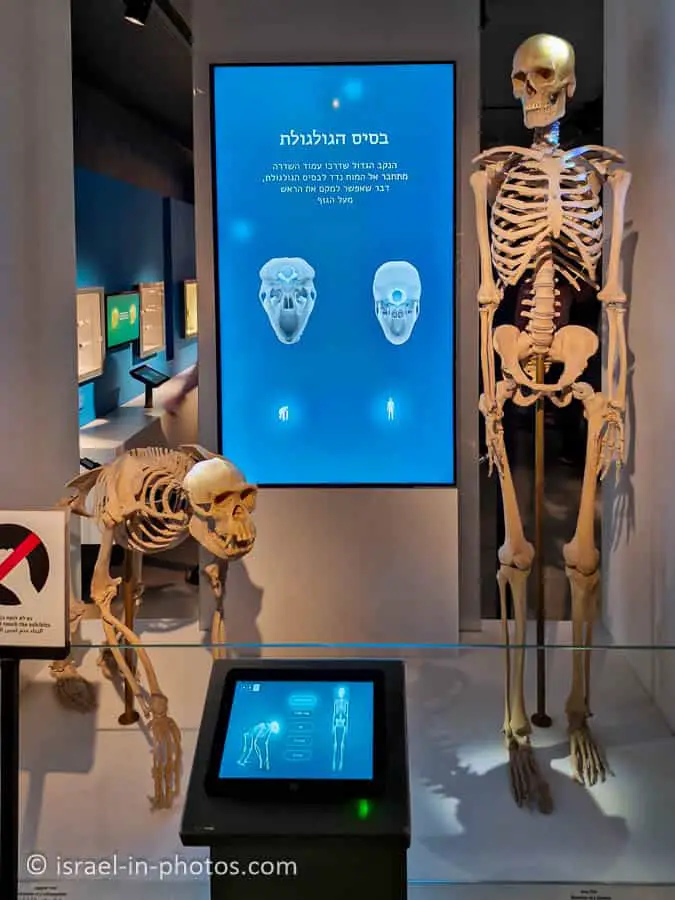
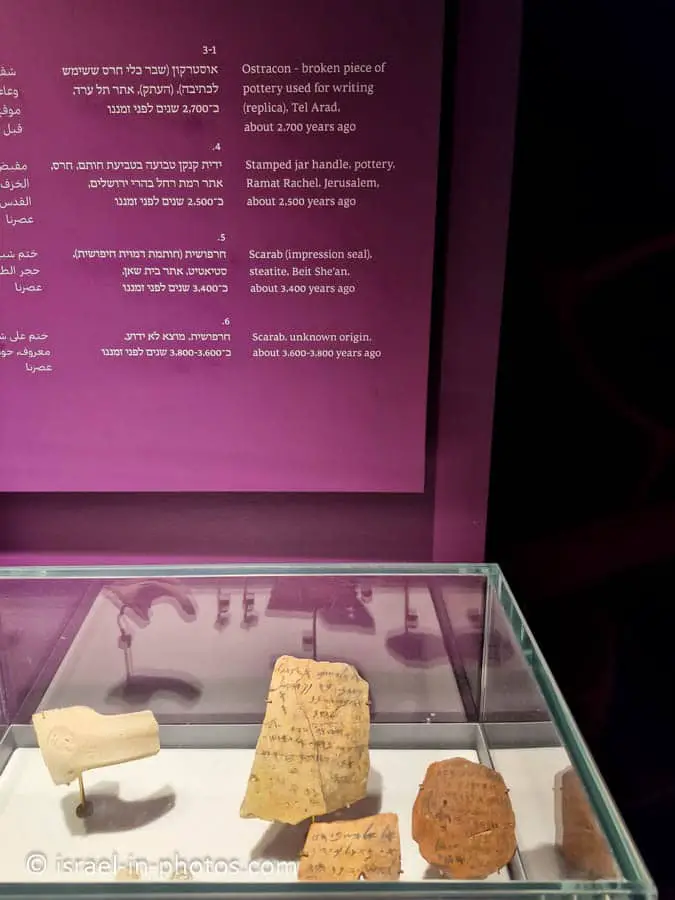
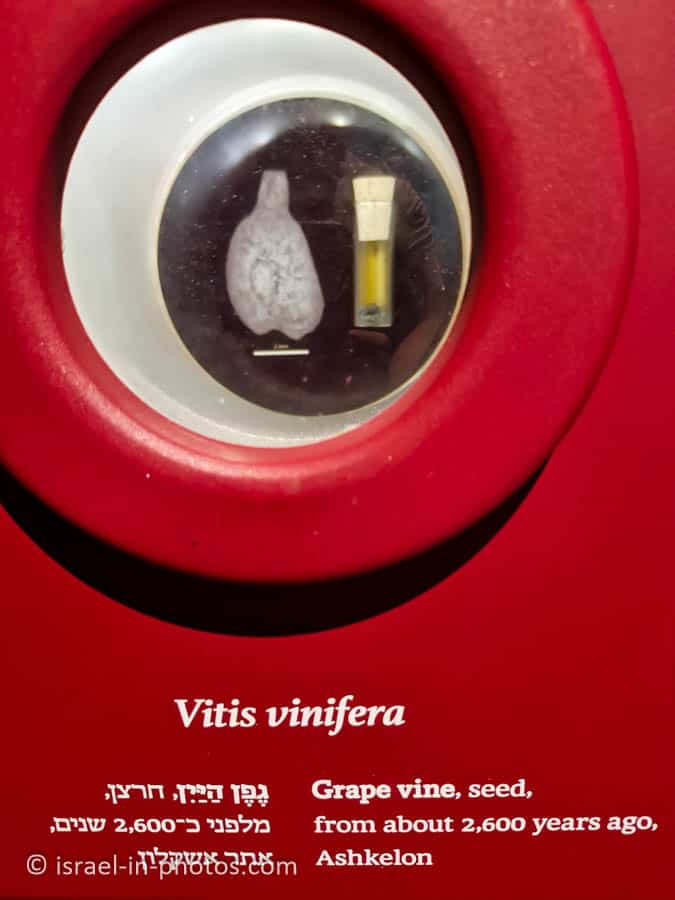
From the fourth floor, we returned to the ground level. On the ground floor, you will find a cafeteria, a shop mainly selling toys for kids, and an exhibition that we previously missed.
Bugs and Beyond
The last exhibition that we visited was “Bugs and Beyond”. Here is a quote from the official site:
Come to discover the wonderful world of arthropods! Insects belong to the arthropod phylum – the largest and most diverse phylum in nature, with more than one million species, which comprise about 80% of all living organisms known to science!
Here are several photos from that exhibition:
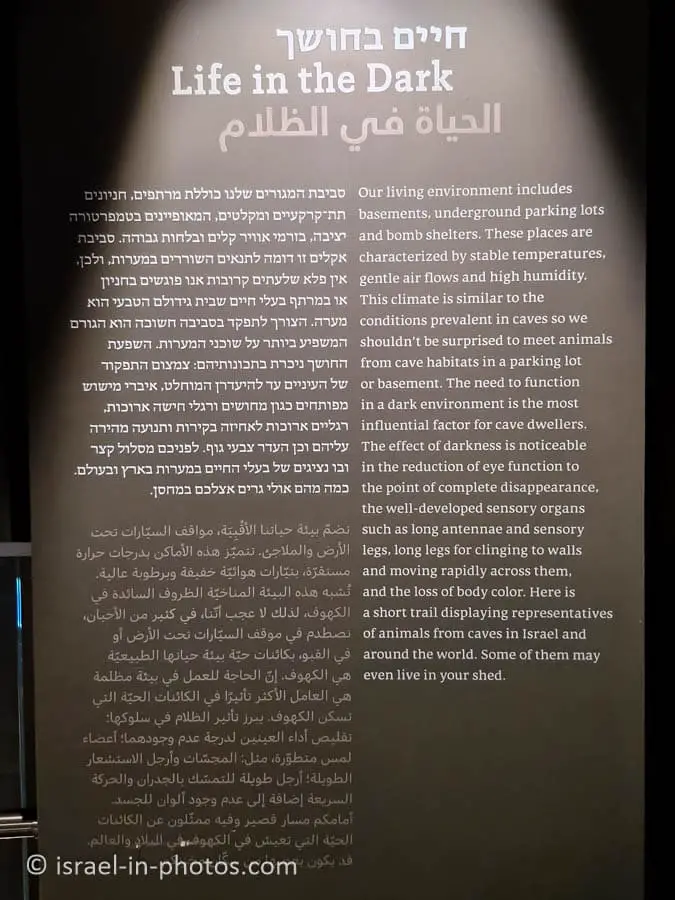
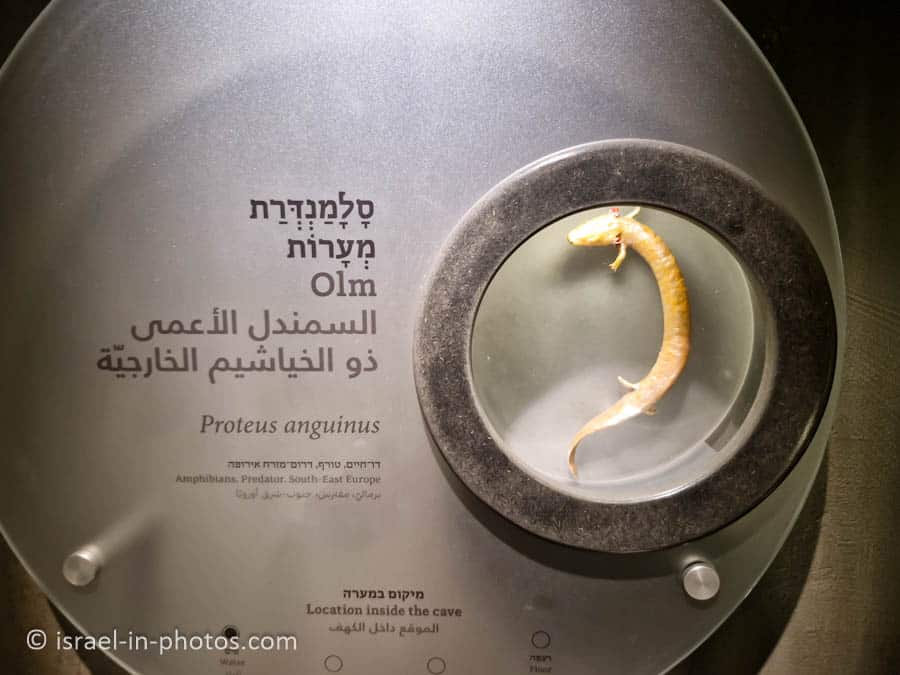
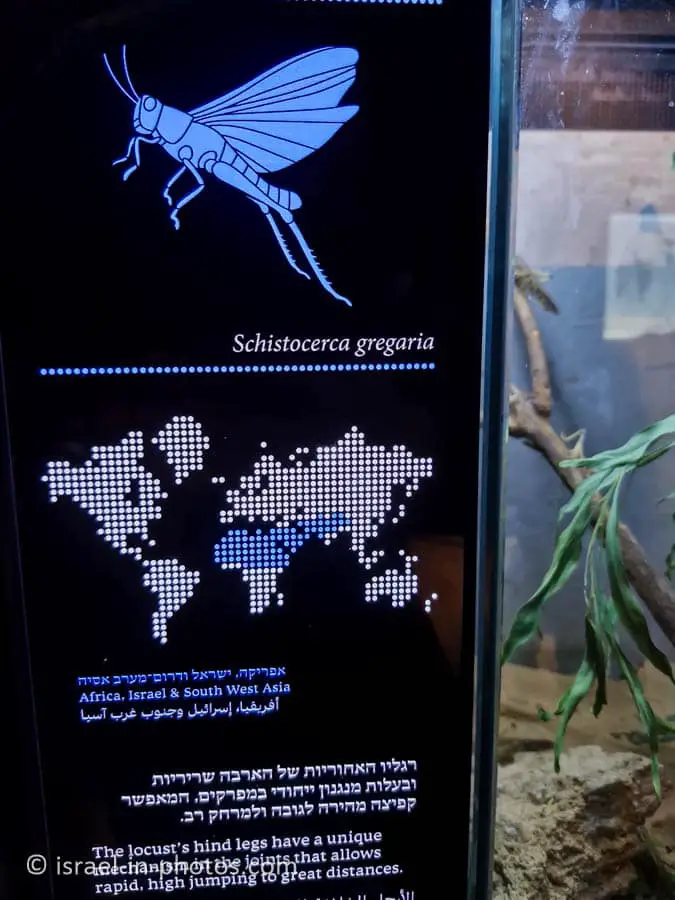
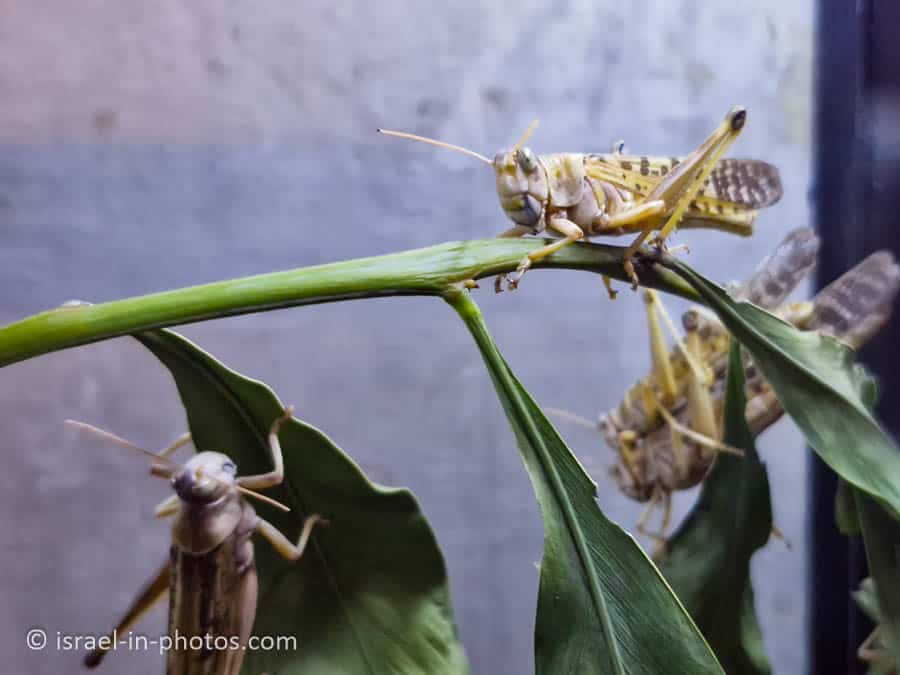
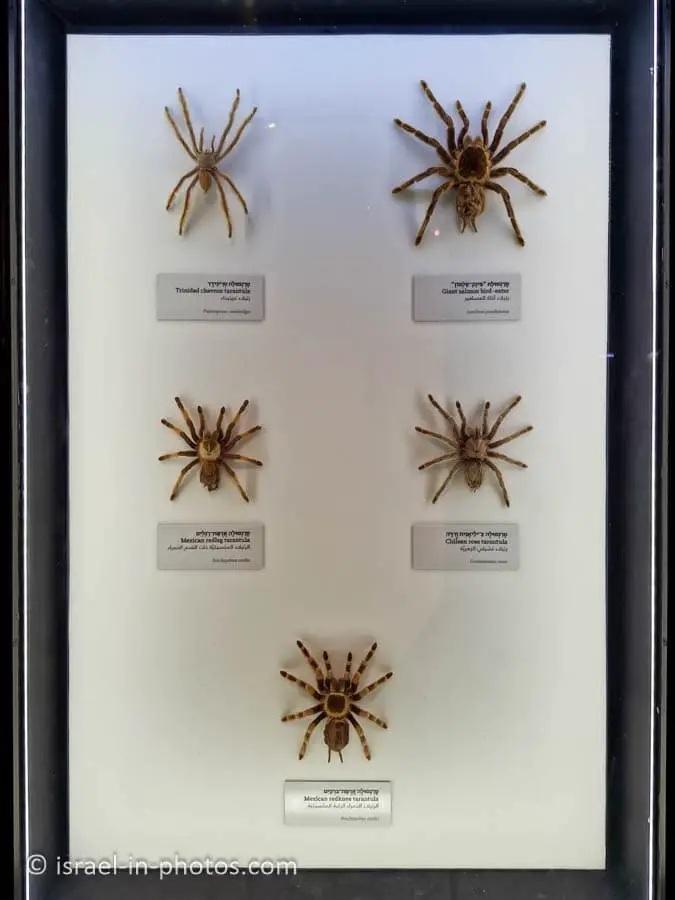
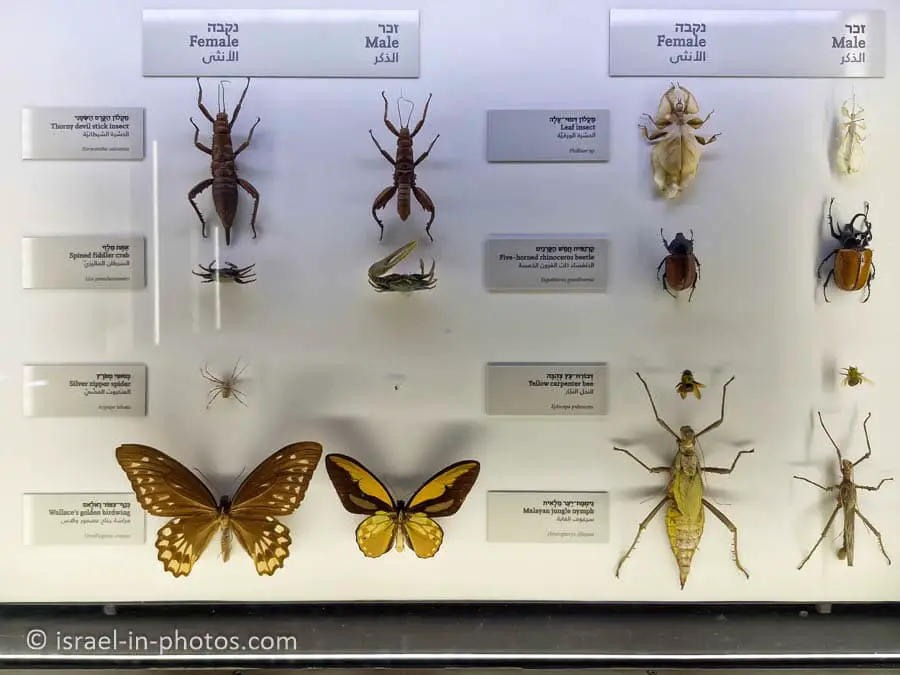
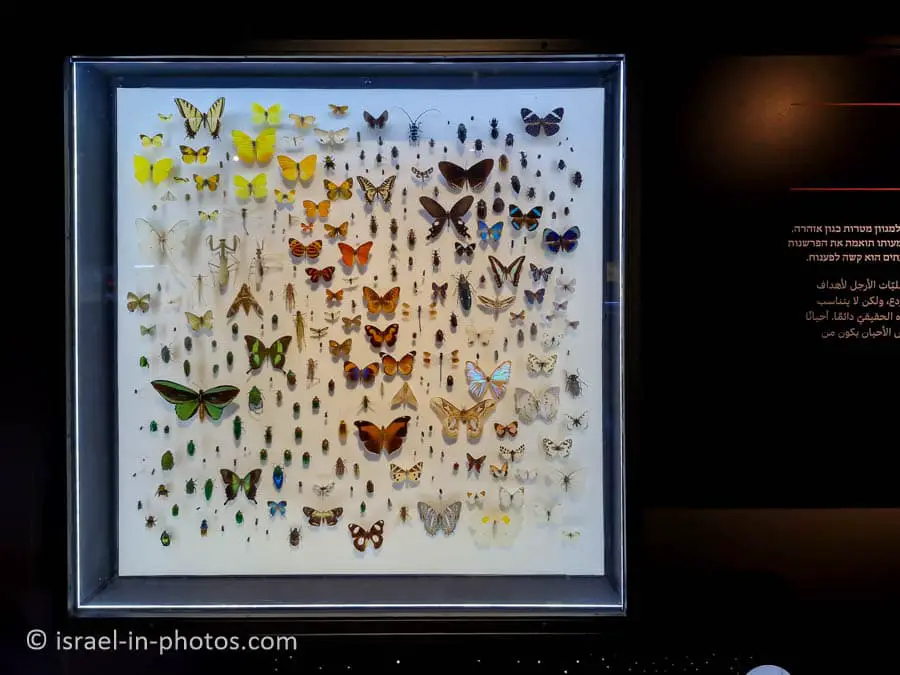
One additional mention. Behind the museum’s building, you can find Yehuda Naftali Botanic Garden. You can visit the Tel Aviv University Botanical Garden by joining a tour. For additional information and to book a tour, please visit the official website.
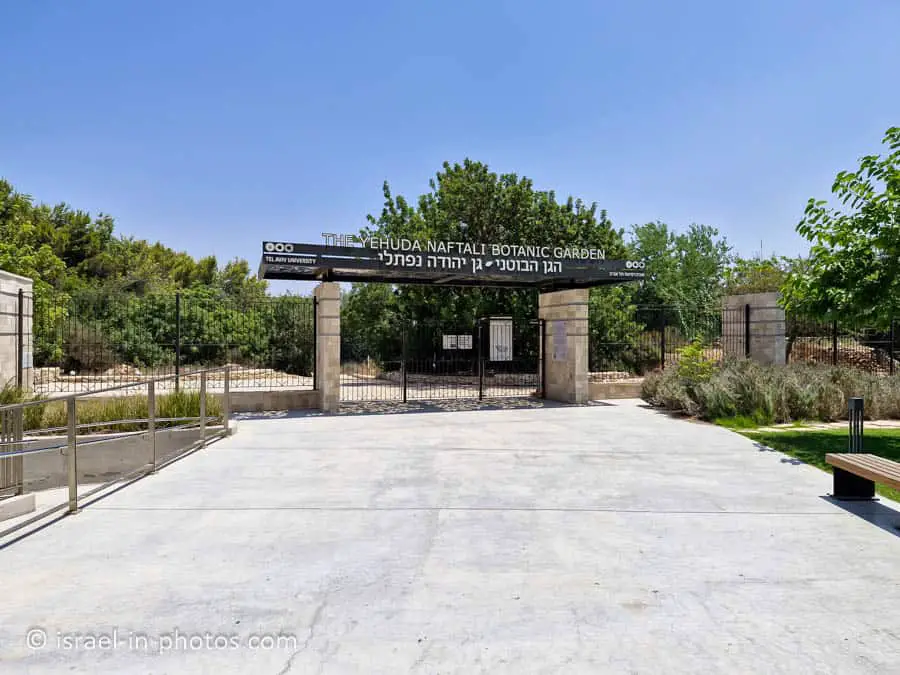
How much time does a typical visit to the Steinhardt Museum of Natural History take?
We spent two and a half hours at the museum. We rushed through some exhibitions because my youngest daughter was tired. Hence, the duration of your visit will depend on the age of your children and your interests. However, for most people, a typical visit will likely last between two and four hours.
Summary
Our visit to the Steinhardt Museum of Natural History was enjoyable. We learned many new things, and because this museum features numerous interactive exhibitions, the kids loved the experience too. I highly recommend it to anyone interested in this topic.
Note: A plus of all museums in Israel is that they are air-conditioned. Hence, you can visit them on a rainy day or a hot day (as we did), when the number of options is limited.
Have you been to the Steinhardt Museum of Natural History? If so, please tell us about your experience in the comments below.
That’s all for today, and I’ll see you on future travels!
Stay Tuned!
For additional points of interest nearby, check out Tel Aviv.
Additional Resources
Here are several resources that I created to help travelers:- Trip Planner with Attractions and Itineraries is the page that will help you create your perfect travel route.
- What is the Best Time to visit Israel? To answer this question, we will consider the weather, prices, holidays, festivals, and more.
- Information and Tips for Tourists to Israel will answer the most common questions tourists have about Israel (including safety, passports, weather, currency, tipping, electricity, and much more).
- Israel National Parks and Nature Reserves include a complete list, top ten, map, tickets (Israel Pass, Matmon, combo), and campsites.
- If you are looking for things to do, here are the pages for Jerusalem, Tel Aviv, Haifa, Sea Of Galilee, Akko (Acre), Eilat, Nazareth, Safed (Tzfat), and Makhtesh Ramon.

